AIR NOSTRUM
León, viaje al corazón del viejo reino
Journey to old kingdom’s heart
El Capricho, amor hecho carne
El Capricho, love made flesh
Jesús Calleja, confesiones de un aventurero
Jesús Calleja, confessions of an adventurer







León, viaje al corazón del viejo reino
Journey to old kingdom’s heart
El Capricho, amor hecho carne
El Capricho, love made flesh
Jesús Calleja, confesiones de un aventurero
Jesús Calleja, confessions of an adventurer






Estimados pasajeros, la última vez que escribí una carta como esta fue en el número de marzo de 2020, justo antes de que se decretase el estado de alarma por la crisis sanitaria del covid-19. Fue un momento muy difícil para todos, que cambió muchas de nuestras perspectivas vitales e hizo que concediésemos un mayor valor a la necesidad de vernos y relacionarnos de forma presencial. Como acertadamente apuntó mi buen amigo Juan Cierco, la más inesperada campaña de puesta en valor de la aviación comercial fue que las aerolíneas tuviésemos que dejar en tierra todas nuestras flotas por la pandemia, ya que solo entonces pudimos comprender en toda su dimensión lo que suponía vivir en un mundo sin aviones.
Lo cierto es que, gracias a la confianza que ustedes entonces depositaron en nosotros, Air Nostrum volvió a remontar el vuelo. Por ello, creo de justicia que el primer párrafo de esta nueva carta, cuatro años después, sea para agradecerles su fidelidad en mi nombre y en el de las 1500 personas que, todos los días, hacen posible que nuestros aviones despeguen y que nuestra compañía siga cumpliendo con su misión.
Este 23 de mayo de 2024 se cumplió el 30º aniversario de la fundación de Air Nostrum. Aunque el día en el que siempre hemos celebrado nuestros cumpleaños ha sido el 15 de diciembre, fecha del primer vuelo, hemos querido elegir este día de mayo para recuperar la revista de a bordo que desapareció de forma obligada de nuestros aviones como consecuencia de las restricciones vinculadas a la pandemia. Les aseguro que volver a dirigirme a ustedes desde esta tribuna me hace una especial ilusión y me llena de orgullo viendo ´la que ha caído.
Dear Passengers,
The last time I wrote a letter like this was in the March 2020 edition of our in-flight magazine, just before the government decreed a state of emergency to tackle the COVID 19 public health crisis. It was a time of upheaval for all of us, a time that changed our perspectives for the future and made us value the need to meet and interact in person more than ever. As my good friend Juan Cierco rightly said, it was only when airlines had to ground their entire fleets due to the pandemic, did we fully understand what it meant to live in a world without aeroplanes. This unexpected turn of events truly highlighted the importance of commercial aviation.
The truth is that Air Nostrum has once again taken o thanks to the trust you, our passengers, placed in us at that time. For this reason, I feel that, four years on, it is only fair that the first paragraph of this letter should serve to thank you for your loyalty both on my behalf and on behalf of the 1,500 people who make it possible for our planes to take o and for our company to continue fulfilling its mission every single day of the year.
Recently, 23 May 2024 marked the 30th anniversary of the foundation of Air Nostrum. Although we have always celebrated our anniversary on 15 December, the date of our first flight, we decided to choose May 23 to bring back our in-flight magazine which disappeared from our planes due to COVID 19 restrictions. I can assure you that I am very excited and proud to be able to address you from these pages once again, especially considering all the hard times we had to endure.
The magazine, produced in collaboration with Editorial MIC, has a completely new format to reflect
La revista, realizada en colaboración con Editorial MIC, llega ahora a sus manos en un formato totalmente renovado, como no podía ser de otra manera en este cambio de ciclo. Para empezar, su periodicidad será trimestral en vez de mensual y, como podrán comprobar, también hemos aumentado el número de secciones incorporando nuevos contenidos para hacerla aún más atractiva. Además, en Air Nostrum creemos que es posible mejorar su experiencia de viaje ofreciéndoles de nuevo nuestra revista de a bordo y, a la vez, seguir apostando por la sostenibilidad. Para imprimirla hemos seleccionado papel reciclado libre de cloro procedente de bosques gestionados de forma sostenible con certificación FSC y PEFC, así como tintas ecológicas hechas de productos orgánicos reciclables que no contienen metales pesados ni aceites minerales en su formulación.
La sostenibilidad está en el ADN de Air Nostrum desde nuestra fundación. No en vano, en 2004 fuimos la primera aerolínea española en obtener la exigente certificación medioambiental ISO14001 y actualmente estamos trabajando en múltiples proyectos en este ámbito tales como el desarrollo de aviones eléctricos o la futura incorporación de pilas de hidrógeno a los motores de nuestros turbohélices.
Por último, solo me resta decirles que en este número hemos querido ofrecerles múltiples ideas para que disfruten planificando su próximo viaje, ¿quizá a León? Es un destino que conozco bien porque Air Nostrum inauguró su aeropuerto a los vuelos comerciales el 2 de junio de 1999 y desde entonces hemos seguido volando allí de forma ininterrumpida. Si no han visitado aún su monumental capital y su variadísima provincia, les recomiendo encarecidamente que lo hagan y que disfruten de su rica gastronomía en su ‘Barrio Húmedo’ o en los abundantes restaurantes y tascas de La Bañeza, Astorga o Cacabelos. Y si son como yo y les gusta el sabor a ahumado, no dejen de degustar sus excelentes cecinas. Aparte de la de vaca, muy conocida, existen otras como la de buey de El Capricho, que es una exquisitez, o la singular cecina de chivo que se produce en Vegacervera, muy apreciada.
“Para imprimirla hemos seleccionado papel reciclado libre de cloro procedente de bosques gestionados de forma sostenible con certificación FSC y PEFC”
this change of cycle. From now on, it will be published quarterly instead of monthly and as you will see, we have also increased the number of sections and added new content to make it even more attractive. At Air Nostrum, we firmly believe that it is possible to improve passenger experience by bringing back our in-flight magazine while at the same time continuing to be committed to sustainability. For this reason, we have chosen to use chlorine-free recycled paper from FSC and PEFC-certified, sustainably managed forests, as well as eco-friendly printer inks made from recyclable organic products that do not contain heavy metals or mineral oils in their formulation.
Sustainability has been in Air Nostrum’s DNA since our foundation. Not in vain, in 2004, were we the first Spanish airline to be awarded the exacting ISO14001 environmental certification and we are currently working on multiple projects in this area, such as the development of electric aircraft or the future incorporation of hydrogen fuel cells in our turboprop engines.
On a final note, it only remains for me to say that in this new edition we would like to o er you some inspiration for future trips. You might like to consider León, a destination I know well as Air Nostrum was the first airline to operate commercial flights from León Airport on 2 June 1999 and we have continued to fly there without interruption ever since. If you have not yet visited the historic city of León and the wonderfully diverse province, I strongly recommend you do so. If food is your thing, I suggest you sample the delicious local cuisine in the capital’s Barrio Húmedo neighbourhood or in the many restaurants and bars of the towns of La Bañeza, Astorga and Cacabelos. And if you are like me and enjoy smoky flavours, don’t miss the excellent ‘cecinas’ (cured meats) of this region. Apart from the well-known beef cecina, there are others such as the delicate El Capricho ox cecina or the unique goat cecina produced in the village of Vegacervera.
Buen viaje / Have a good flight!
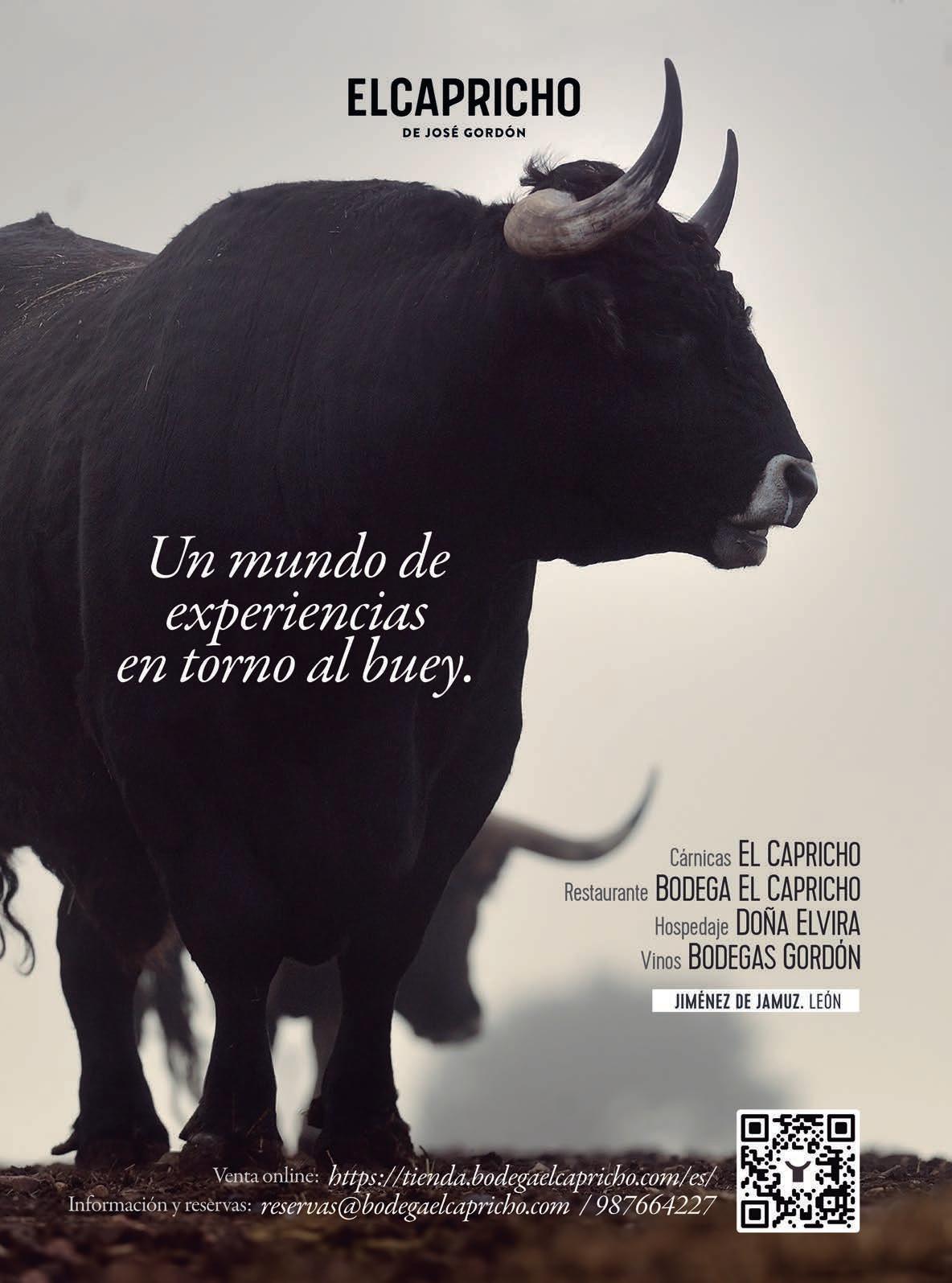
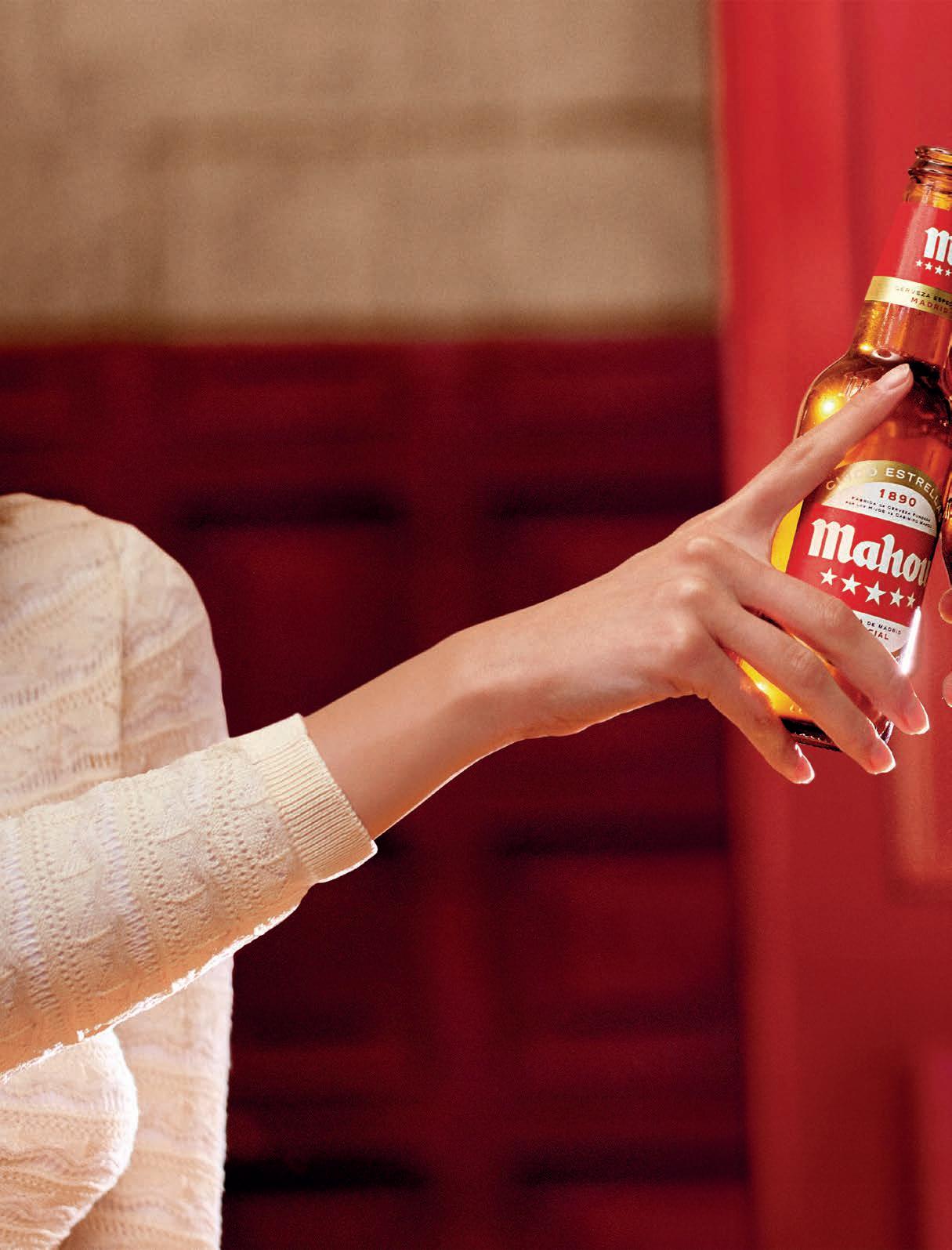


Edita / Publisher
Air Nostrum Líneas Aéreas
Presidente/President Carlos Bertomeu
Director Comunicación Air Nostrum / Communications Director Antonio de Nó
Coordinador Air Nostrum
Air Nostrum Coordination
Jorge Aguadé prensa@angs.aero
Dirección ejecutiva / Executive Director
Fernando Santos Vicente
Dirección editorial / Editorial Director
Ana I. Martínez
Dirección de Marketing / Marketing Director
Francisco Robles
Dirección de Publicidad / Advertising Director
Benita Espadas y Virginia Calvo
Redacción / Editors
Gerard Olivares, MJ Prieto, Luis Tejedor, Desiré Alija, Diego Álvarez, Mabel Luna, Isabel Robles, Anna Burgstaller, Carles Llusà
Firmas invitadas / Invited brands
Paz Ferrer, Javier Ortega, Albert Orfila
Diagramación y Diseño
Layout and design
Verónica F. Simón, Carmina Canseco, Marta Menéndez, Irune Méndez, Esperanza Prieto, Cristina Pangua
Fotografía / Photograph
Óscar Rodríguez, Cristina Bazán, Archivo Editorial MIC, Agencias
Publicidad / Advertising
Tel. 646 019 658 – 902 271 902 comunicacion@editorialmic.com
Correspondencia / Contact mic@editorialmic.com




CARTA DEL PRESIDENTE LETTER FROM THE PRESIDENT 3
DESTINO LEÓN | CHECK IN LEÓN
Viaje al corazón del viejo reino
A journey into the old kingdom’s heart
EL CAPRICHO |
El amor hecho carne Love made flesh
GORDÓN
Producción editorial / Editorial production Editorial MIC
www.editorialmic.com

Costa Azul Blue Coast
TOP 6












RELATOS DE VIAJE TRAVEL MEMORIES
JESÚS CALLEJA







LA ALBUFERA
El espejo de agua Water Mirror



“En mi vida hago lo que me hace feliz, viajar por el mundo y vivir aventuras” “I do what makes me happy in life: travel the world and have adventures”


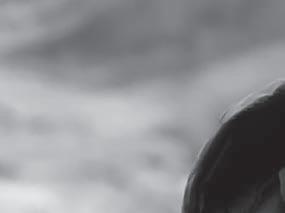

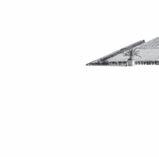


TRAYECTORIA | CAREER
NURIA ROCA
“Intento cortarme lo menos posible y ser absolutamente libre” “I try to limit myself as little as possible and be absolutely free.”
El restaurante más antiguo del mundo está en Madrid
The world’s oldest restaurant is in M adrid

NH Collection León Plaza Mayor
NH Collection León Plaza Mayor
BEAUTY ADVISOR by

PAZ FERRER

ICONOS ARQUITECTÓNICOS

JAVIER ORTEGA FIGUEIRAL
La obra de Mansilla + Tuñón en León, Vigo y Cáceres
Mansilla + Tuñón’s work in León, Vigo and Cáceres




LOS AMORES
PARISINOS DE MÁXIMO HUERTA MÁXIMO HUERTA AND HIS LOVE FOR PARIS
Los ojos del universo The eyes of the universe
Comprometidos con el medio ambiente Committed to the environment
León tendrá siete rutas este verano y nueva conexión con Oporto en invierno León will have seven routes this summer and will add a new connection to porto in winter












“Los sueños no se cumplen se trabajan”
“Dreams do not come true; you have to work for them”
Albert Orfila Vivir en una isla
Living on an island V igo, Bilbao, Valladolid

TEXTOS: MJ Prieto / FOTOS: Óscar Rodríguez
Paso obligado entre la meseta y el norte y noroeste peninsular, es León tierra de caminos con nombre propio. Caminos que surcan los cielos desde un moderno aeropuerto. Caminos que unen. Que acercan su patrimonio, su arte, su historia y mucho más. Iglesias, retablos, museos, monasterios, castillos y palacios salpican los rincones de una tierra que nació bella. Tierra de montaña. De pastos y ríos. De montes y llanos. De manjares de reyes. Una exquisitez. Un contraste y un refugio.
Located on the way from the plateau to the north and northwest of the peninsula, León is a land of roads with a name of its own. There are roads that cross the skies from a modern airport, roads that unite and roads that bring closer its heritage, its art, its history and much more. Churches, altarpieces, museums, monasteries, castles, and palaces are found in every corner of a land that was born beautiful. This is a land of mountains, of meadows and rivers, of hills and plains, and of kingly delicacies. A real treat, a place full of contrasts, and a haven.


En León, los paisajes componen un lienzo de contraste asombroso. El norte es tupido, con bosque atlántico que exhibe un carácter indomable, mientras el sur y el centro conservan la serenidad de los terruños de labranza.
Una vez que se ponen los pies en la tierra, la visita va de récords. León puede presumir de tener una de las mayores concentraciones de Reservas de la Biosfera de España catalogadas por la UNESCO. Son siete pulmones de aliento.
La de Picos de Europa –primer Parque Nacional declarado en España, en 1918–cobija un territorio de montañas encrespadas y bosques insondables. Es refugio del lobo, el oso, el urogallo y el rebeco. Un paraíso natural.
Al noroeste, rodeado de un circo de cumbres que alcanzan los 2.000 metros, el Valle de Laciana suma otra reserva más y presume de castros romanos, cascadas, ermitas, chozos, tejos milenarios, lagunas y molinos. Las zonas altas de pastoreo, que aquí se llaman brañas, son también hogar de especies amenazadas, como el urogallo y el oso pardo. Y en Babia, la reserva se viste con traje de ensueño. Dice la leyenda que los reyes medievales acudían a estos parajes para desconectar de las tensiones de la corte. Y de ahí nace la expresión “estar en Babia”. Embobarse. Rendirse a la belleza y soñar despierto.
La reserva del Alto Bernesga, en la Montaña Central de León, es un monumento de convivencia entre las especies vegetales de la España mediterránea y atlántica. Árboles dispares separados por escasos metros se retuercen en formas imposibles. Porque imposible es juntar tanta riqueza.
En la reserva de Los Argüellos, la vegetación rezuma por las montañas. Entre las intrincadas venas de las moles calcáreas crece un museo subterráneo, la cueva de

Valporquero. Galería de arte natural moldeada por el agua. En Omaña y Luna, la sucesión de pequeños y fértiles valles confieren a la estampa un aspecto bucólico. Es el reino del sosiego.
La reserva de los Ancares Leoneses, en el noroeste, regala pura explosión cromática. El verde roble se mezcla con el rojo sabroso de frutos silvestres y el marrón de castaños centenarios y singulares pallozas. Laboratorio de sostenibilidad y explosión de vida.


In León, the landscapes make up a diverse and striking scenery. The north is dense, covered by the indomitable Atlantic forest, while the south and centre preserve the serenity of farmland.
Once you get your feet on the ground, the visit is all about records. León has one of the highest concentrations of UNESCO Biosphere Reserves in Spain. It has seven lungs.
Declared Spain’s first national park in 1918, the Picos de Europa range is an area of rugged mountains and impenetrable forests. It is a refuge for the wolf, the bear, the wood grouse and the chamois. A natural paradise.
To the northwest, surrounded by a cirque of peaks that reach 2,000 metres, the Laciana Valley adds to the list, with Roman forts, waterfalls, hermitages, huts, ancient yew trees, ponds, and mills. The highland pastures, called brañas, are also home to endangered species such as the wood grouse and the brown bear. In Babia, the reserve is shrouded in dreamy costumes. Legend has it that medieval kings came to these places to get away from
the tensions of the court. Hence the expression “estar en Babia” (to be in Babia). To be enraptured. To surrender to the beauty and daydreaming.
The Alto Bernesga Reserve, in the central mountains of León, is a monument to the coexistence of plant species from the Mediterranean and Atlantic regions of Spain. Different trees, separated by only a few metres, are twisted into impossible shapes. Because it is impossible to combine so much richness.
In the reserve of Los Argüellos, the mountains are brimming with vegetation. Among the intricate veins of the limestone masses grows an underground museum, the cave of Valporquero, a natural art gallery shaped by water. In Omaña and Luna, the succession of small and fertile valleys creates a bucolic scenery. It is the realm of tranquillity.
In the northwest, the Ancares Leoneses reserve showcases a real chromatic explosion. The green oak mixes with the tasty red of wild berries and the brown of centenary chestnut trees and unique thatched pallozas. It is a laboratory of sustainability bursting with life.

Dijo un viejo librero de la capital que, en León, la Ruta Jacobea irrumpió como una arteria del arte para transportar el flujo de las corrientes culturales y artísticas europeas. Palabras sabias. A lo largo del Camino de Santiago se asentaron las urbes que conformaron grandes focos de dinamismo medieval. Este impulso sistólico se puede encontrar en Sahagún, con excepcional patrimonio mudéjar. Y en la capital leonesa. La basílica de san Isidoro, la Catedral, Casa Botines y San Marcos componen uno de los conjuntos monumentales más impresionantes del país. La urbe, de origen romano, concentra en su casco viejo las pintorescas callejuelas del Barrio Húmedo, regadas de bares, encanto y buen ambiente. Y también las del Romántico, que compiten en buenos vinos y mejores tapas.
Astorga es ciudad monumental. Su pasado romano exhala por los cuatro costados. Aquí también dejó firma el ingenioso Gaudí, con un palacio episcopal de cuento. Es parada obligada Villafranca del Bierzo, villa donde los peregrinos alcanzan las gracias jubilares si no pueden llegar a Santiago. Su calle del Agua es pasarela de palacios y casonas cargadas de escudos heráldicos.
En el Bierzo sorprende la infinita gama de colores. Un vergel donde el olor de castañas y pimientos se mezcla con retazos de rica historia. Ponferrada, con su castillo templario, es una urbe de calles adoquinadas que esconde leyendas medievales. Y antesala de Las Médulas, la mayor mina de oro a cielo abierto del Imperio Romano, que es Patrimonio de la Humanidad por la UNESCO. La postal que dibujan picachos de tierra rojiza y castaños centenarios es de infarto.
La provincia posee también una historia regia. Testigos del tiempo son los castillos que albergaron desvelos medievales, como el de Grajal de Campos




An old bookseller in the city of León said that the Jacobean Route emerged as an artery for the flow of European cultural and artistic currents. Wise words. Along the Pilgrim’s Road to Santiago de Compostela, cities were established that became great hubs of medieval dynamism. This systolic impulse can be found in Sahagún, with its exceptional Mudejar heritage, and in the capital of León. The Basilica of San Isidoro, the Cathedral, Casa Botines and San Marcos form one of the most impressive monumental ensembles in the country.
The city, of Roman origin, concentrates in its old town the picturesque streets of the Barrio Húmedo, full of bars, charm, and a great atmosphere. There is also the rivalling Barrio Romántico, with good wines and the best tapas.
Astorga is a monumental city. Its Roman past can be found in every corner. Here the genius Gaudí left his mark with a magical Episcopal Palace. Villafranca del Bierzo is an obligatory stop, a town where pilgrims obtain the jubilee graces when they cannot reach Santiago. Its Calle del Agua is lined with palaces and mansions full of heraldic coats of arms.
In El Bierzo, the infinite range of colours takes us by surprise in this orchard where the scent of chestnuts and peppers blends with pieces full of history. Ponferrada, with its Templar castle, is a city of cobbled streets that hide medieval legends and the gateway to The Médulas, the largest open-pit gold mine in the Roman Empire, declared a World Heritage Site by UNESCO. The postcard image of reddish peaks and centuries-old chestnut trees is breathtaking.
The province also has a royal history. The castles that sheltered medieval worries, such as that of Grajal de Campos or Valencia de Don Juan, cradle of legends and noble battles, are witnesses of that time. Along the Jacobean Route, monasteries flourished, such as Santa María de Carracedo, which came to dominate a vast area, Gradefes, with its beautiful chevet, and San Miguel de Escalada, with its delicate horseshoe arches.
The Leonese tradition of the filandón was born on cold winter nights. Gathered around the fireplace, villagers told stories, gossiped, and shared mysterious legends that emerged from the bowels of unusual wild places. In the darkness, a tawny owl with glowing eyes watched the scene. Another record-breaking fact: the filandón has been declared a Treasure of the Intangible Heritage of Spain.
o Valencia de Don Juan, cuna de leyendas y nobles batallas. Al paso de la ruta jacobea florecieron monasterios como el de Santa María de Carracedo, que llegó a dominar una vasta extensión, o el de Gradefes, con su bellísima cabecera, y San Miguel de Escalada, con sus delicados arcos de herradura.
La tradición leonesa del filandón surgió en las frías noches de invierno. Las gentes de los pueblos contaban historias al calor de la lumbre; chismorreos y leyendas envueltas en misterio que surgían de las entrañas de insólitos parajes agrestes. En la oscuridad, los ojos de cristal de un cárabo contemplaban la escena. Otro dato de récord: el filandón ostenta el diploma de Tesoro del Patrimonio Cultural Inmaterial de España.
UN BOSQUE DE CUENTO. Hay muchos más. Pero en el Faedo de Ciñera, las ramas retorcidas estremecen. Las especies vegetales parecen cobrar vida, como en un cuento mágico, mientras el olor a hojas mojadas y el tintineo del agua recrean una atmósfera hechizante. El corazón del bosque se rinde a Fagus, un haya ancestral con más de 500 años que figura en la lista de los 100 árboles más singulares de España. Y prosigue el récord: el faedo ha sido catalogado como uno de los bosques mejor cuidados de España.
HOCES DE VEGACERVERA. Las paredes verticales producen una sensación sobrecogedora. La angosta garganta es fruto del trabajo del agua sobre la piedra caliza. El río Torío, artífice de la ingeniería natural, ha creado marmitas de gigante y pozas que siembran el paisaje de un encanto misterioso.

“Una vez que se ponen los pies en la tierra, la visita va de récords. León puede presumir de tener una de las mayores concentraciones de Reservas de la Biosfera de España catalogadas por la UNESCO”
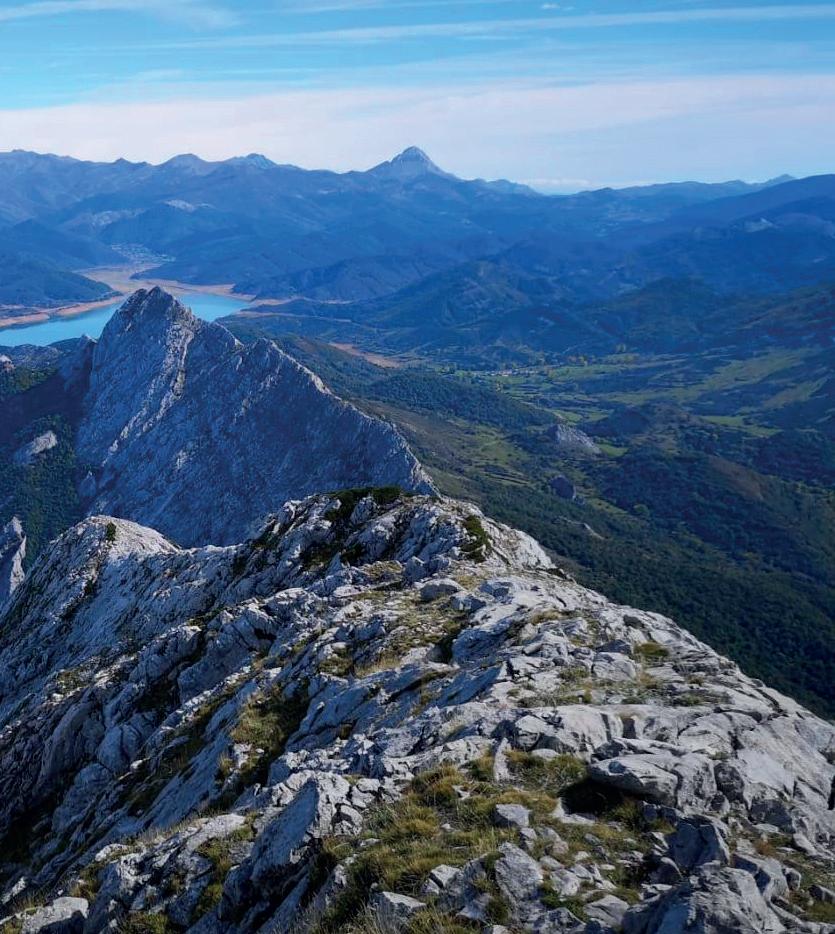
Extensión: 15.581 km2, entre las provincias más extensas de España.
Clima: Mediterráneo de influencia continental.
Altitud León ciudad: 837m.
Aeropuerto: a 8 km de la capital.
Area: 15,581 km2, one of the largest regions in Spain.
Weather: Mediterranean with continental influence.
Altitude León: 837 m.
Airport: 8 km from the capital city.

“Once you get your feet on the ground, the visit is all about records. León has one of the highest concentrations of UNESCO Biosphere Reserves in Spain”
VALLE DEL SILENCIO. El nombre no puede ser más evocador. Sin palabras. El angosto paisaje serpentea entre árboles y montañas onduladas. No es de extrañar que los ermitaños eligieran este rincón del mundo para la contemplación y el retiro. El camino hasta Peñalba de Santiago es obligado, por su belleza, su arquitectura popular y la erecta iglesia, joya del mozárabe prerrománico. Y culmina en la cueva de san Genadio, eremita que buscó sosiego espiritual en el valle. DE VIANDAS Y CALDOS. No hay mediodía que se tercie sin tomar un vino. En León se sirven del Bierzo o de Tierras de León. Siempre acompañados de un buen bocado. Porque este es el reino de las tapas. Por gentileza de la casa. Por costumbre. Por generosidad. Y porque sí. A la hora de compartir mantel, los productos de León son magníficos. Cecina, cocido maragato, botillo, sopas de trucha o ancas de rana. ¡Y que huerta! Quesos, frutas y mucho dulce. Porque a León se llega con ganas. Y se marcha con la gula de regresar pronto.

A FAIRYTALE FOREST. There are many more, but the twisted branches of Faedo de Ciñera forest are awe-inspiring. The plants seem to come to life as if in a fairy tale, while the smell of wet leaves and the sound of water create an enchanting atmosphere. The heart of the forest is occupied by the Fagus, an ancient beech that is more than 500 years old and is included in the list of the 100 most unique trees in Spain. And there are more records: the Faedo has been listed as one of the best-preserved forests in Spain.
GORGE OF VEGACERVERA. The vertical walls create an overwhelming feeling. The narrow gorge is the result of the work of the water on the limestone. The Torío river, the architect of such natural engineering, has created huge basins and pools that give the landscape a mysterious charm.
VALLEY OF SILENCE. The name could not be more evocative. Without words. The narrow landscape
winds between trees and rolling mountains. No wonder the hermits chose this corner of the world for contemplation and retreat. The road to Peñalba de Santiago is a must, for its beauty, its popular architecture, and the upright church, a jewel of pre-Romanesque Mozarabic architecture. It ends in the cave of St Genadio, a hermit who sought spiritual peace in the valley.
FOOD AND WINE. No lunch is complete without a glass of wine. In León it is served from El Bierzo or León’s vineyards. It is always accompanied by a good snack. Because this is the realm of tapas. Courtesy of the house and out of custom, just because. When it comes to sharing a meal, the products of León are magnificent. Cecina, Maragato stew, botillo, trout soup or frog legs. And what a vegetable garden! Cheese, fruit, and plenty of sweets. You come to León with a craving, but you leave wishing to return soon.




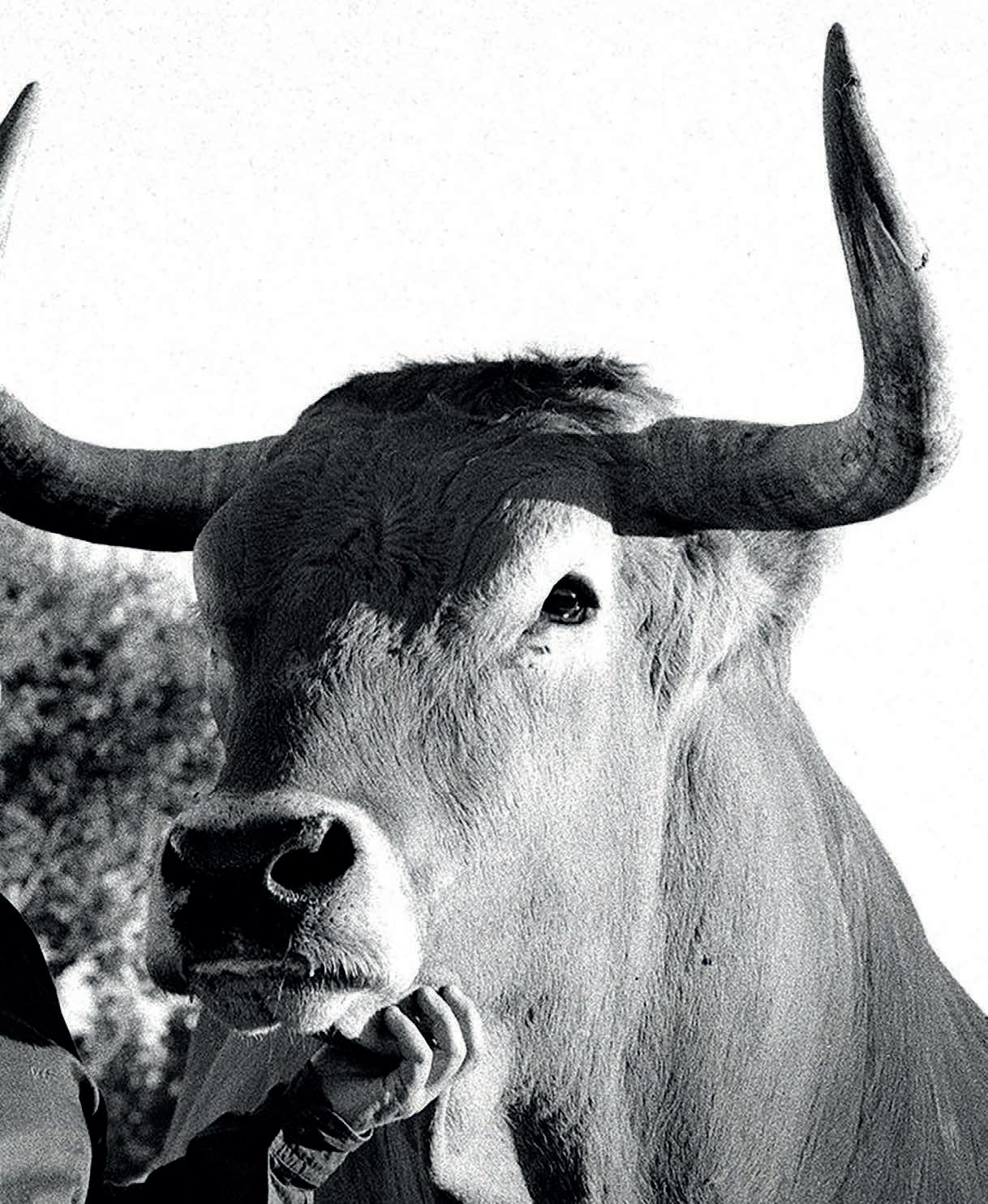

Con una carne ponderada como la mejor del mundo, la oferta de El Capricho gravita en torno a la pasión de su propietario por el buey. En la bodega de José Gordón, materia y esencia van de la mano para colmar su obsesión por la calidad del producto.
Its meat is renowned for being the best in the world, and its o er revolves around its owner’s passion for ox. In El Capricho, José Gordón’s restaurant, ingredients and essence go hand in hand to feed his obsession with the quality of the products.
Cuando Lydia Itoi, una afamada periodista de viajes de la revista Time, se preguntó en 2007 dónde estaba la mejor carne de buey, dio un vuelco a la vida de José Gordón. Itoi, con mucha querencia por la cosa del fact-checking, escudriñó el norte de España en busca de su santo grial, “el secreto del chuletón supremo”. Y encontró la respuesta en la Bodega El Capricho, en Jiménez de Jamuz, un pueblecito de León, donde este alquimista de las parrillas sirve un producto de calidad avasalladora. Lo que vino después fue un efecto mariposa de manual.
La maestría de Gordón al frente de El Capricho no había pasado desapercibida en España, pero aquel artículo tuvo un impacto global. “Me


di cuenta porque cogía el teléfono y me hablaban en otros idiomas. Comenzaba a llegar gente desde muy lejos, personas que fletaban un avión privado desde Singapur o desde Australia para venir a comer a mi casa. Algo fuerte estaba pasando”, explica.
Desde entonces, el restaurante ha ido creciendo a la vez que su renombre. A diferencia de otros locales, donde la notoriedad condujo al adocenamiento, José Gordón se enrocó en unos principios innegociables. ¿Pura cazurrería leonesa?
Él sostiene que “sin un propósito verdadero, todo se convierte en humo. Siempre abogo por proyectos reales que tengan sinceridad, porque eso lleva a la excelencia”.
When Lydia Itoi—a famed travel journalist for Time magazine— wondered in 2007 where to find the best beef in the world, it turned José Gordón’s life upside down. Itoi, a fact-checking enthusiast, scoured northern Spain searching for the holy grail: “the secret to the supreme rib steak”. She found the answer at Bodega El Capricho, in Jiménez de Jamuz, a small town in León, where an alchemist of grills serves a product of overwhelming quality.
Gordón’s mastery at the helm of El Capricho had not gone unnoticed in Spain, but Itoi’s article had a global impact. “I noticed it because I would pick up the phone and people would speak
to me in other languages. People started coming from far away, people chartered private planes from Singapore or Australia to come and eat at my restaurant. Something big was happening,” he explains.
Since then, the restaurant has grown along with its reputation. Unlike other places where fame has led to mediocrity, José Gordón has stuck to his non-negotiable principles. Pure Leonese stubbornness? He maintains that “without a real purpose, everything goes up in smoke. I always advocate real projects with sincerity because that leads to excellence.”

TIERRA Y FAMILIA
En el fondo, esta historia es el viaje personal de un chico que comenzó sirviendo jarras de vino en el merendero familiar, que hoy es El Capricho. Y no es una cuestión baladí. Gordón se retrata a sí mismo como “una persona de valores –lealtad y esfuerzo– muy apegada a la tierra. Eso lo aprendes de la familia. Doy gracias por venir de donde vengo y poder construir algo especial. El amor a la tierra me ha llevado invertir en un pequeño pueblo de ochocientos habitantes”. Y así se echó a la espalda la recuperación de los viñedos de su abuelo, Segundo Gordón, quien, a pico y pala, excavó esta bodega en la tierra arcillosa de Jiménez de Jamuz. No fue fácil. “De 2013 a 2016 no coseché nada y en 2017 tuvimos que empezar de nuevo por la helada. Ahora hacemos unos vinos frescos y elegantes que nos dan grandes alegrías”.
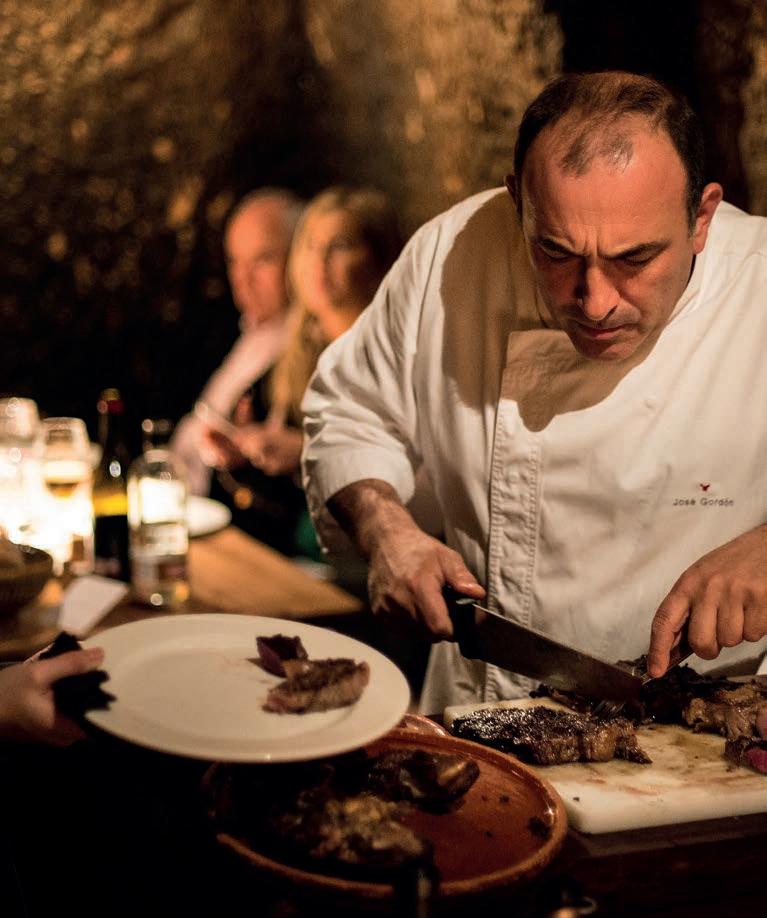

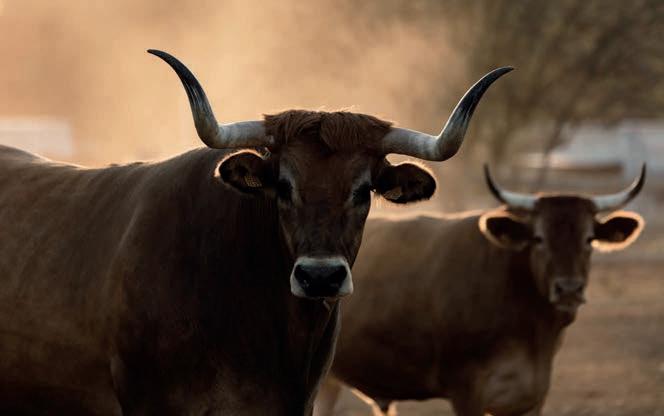
At its heart, this is the story of a boy who started out serving jugs of wine at the family outdoor restaurant that is now El Capricho. This is no trivial matter. Gordón describes himself as “a person who holds values—loyalty and hard work—that are very attached to the land. You learn that from your family. I am grateful to have come from where I came and to have been able to build something special. My love for this land led me to invest in a small town of eight hundred people”. And so, he threw himself into the recovery of the vineyards of his grandfather, Segundo Gordón, who dug this winery in the clay soil of Jiménez de Jamuz with a pick and a shovel. It wasn’t easy: “There was no harvest from 2013 to 2016, and in 2017 we had to start again because of the frost. Now we are making fresh and elegant wines that give us great pleasure.”
There are no secrets here; everything is in plain sight, in the meat of animals selected, raised, and aged by Gordón. “I have a very special relationship with this animal, the ox. It is a mystical animal, with a nobility that gives me peace. When we enjoy their meat, we enjoy their nobility. We create a bond with them. When it comes to slaughtering them, it is complicated because you are saddened by that decision, but
when they die on the farm, it makes sense. It makes them less immortal,” he says confidently. For this reason, these native breeds live a spoiled life. The Gordón oxen live in a beautiful natural environment, they roam freely and choose what and when to eat, drink and rest. Their well-being is palpable.
The obsession extends to the maturation of the meat, from 30 to 180 days. An obsession that puts this eatery one step ahead of the game, given the individualised handling of each piece.
“The age, breed and temperament of each animal are taken into account. If not, perfection cannot be achieved,” he explains. During this time, the fats penetrate the inside of the meat, making it more succulent; the fibrous structures are broken down, making it more tender; and the protein liquids are released, giving it a better flavour.
In order not to waste all this knowledge, he trains his grillers in the finer points of the craft. They have to be masters of sealing and caramelising the product, enhancing its tenderness. Moreover, the firewood that feeds the fire must not mask the taste of the raw meat.
At the table, the mise en scène is the logical conclusion. During the slicing ceremony, each piece and each muscle is skilfully separated so that the texture is optimal. What’s more, “it’s a moment of gratitude and paying homage to the animal for this sacrifice.”
Aquí no hay misterios. Están a la vista, en la carne de unos animales seleccionados, criados y madurados por Gordón. “Tengo una conexión muy especial con este animal, el buey. Es un animal místico, con una nobleza que me da calma. Cuando disfrutamos de su carne, disfrutamos de su nobleza. Creamos un vínculo con ellos. Es complicado el momento del sacrificio, porque te entristece esa decisión, pero cuando mueren en la finca lo hacen con menos sentido. Es menos inmortal”, afirma con seguridad. Por eso, estos animales de razas autóctonas viven colmados de atenciones. Los bueyes de Gordón están en un bello espacio natural con absoluta libertad para elegir lo que comen, beben y descansan. Y el bienestar se nota.
La obsesión tiene su siguiente capítulo en la maduración de la carne, de 30 a 180 días. Una fijación para poner a esta casa un paso por delante, con el tratamiento individualizado de cada pieza. “Influye la edad, la raza y el carácter de cada animal. Si no se tiene en cuenta, no se llega a la perfección”, razona. Durante este tiempo, las grasas se infiltran al interior de la carne y aportan untuosidad; se rompen las estructuras fibrosas, haciéndola más tierna; y se liberan los líquidos de la proteína, confiriendo un mayor sabor.
Para no echar por la borda toda esta minuciosidad, forma a sus parrilleros en los entresijos del oficio. Que sean maestros en el sellado y caramelización del producto y en destacar su suavidad. Además, la madera que alimenta el fuego no debe enmascarar el sabor de la materia prima.
Ya en la mesa, la mise en scène es el punto final lógico. En la ceremonia del corte, separan con destreza cada trozo y cada músculo para que la textura sea óptima. Y aún más, “es un momento de gratitud y recuerdo al animal por esa ofrenda de la carne”.

La propuesta de El Capricho dignifica los productos de su entorno, ya sea de manera tradicional o con técnicas de vanguardia. Los menús, el esencial y el homenaje, proporcionan una buena visión de conjunto de esta cocina, pero hay tres platos imprescindibles.
Envejecida durante cuatro años en una bodega natural, la cecina de la casa es un producto de enorme complejidad que, según apuntan “cuando la metes en la boca, te rompe la cabeza”. Otro clásico es el steak tartar, cortado a cuchillo, con un sabor maravillosamente equilibrado. La carne armoniza con un pimiento, fermentado en bodega, y las notas picantes del rocoto. Finalmente, el tuétano en tosta de paprika con pomelo rosa es un plato muy especial. Allí lo pintan con mantequilla de pimienta negra y lo glasean, para después acompañarlo de jalapeño y zanahoria encurtida. Si a estos productos le sigue después una chuleta, Gordón asegura “tocar el cielo”. Ninguna duda al respecto.
El Capricho’s o er honours the products of its environment, either in a traditional way or with cutting-edge techniques. The esencial and homenaje menus provide a good overview of this cuisine, but there are three must-have dishes.
The cecina, matured for four years in a natural cellar, is a product of enormous complexity that, as they say, “when you put it in your mouth, it makes your brain explode”. Another classic is the knife-cut steak tartar, boasting a wonderfully balanced flavour. The meat blends in with a pepper fermented in the cellar and the spicy notes of rocoto pepper. Finally, the bone marrow on paprika toast with pink grapefruit is a very special dish. It is glazed with black pepper butter and accompanied by jalapeños and pickled carrots. If these products are followed by a steak, Gordón claims that “you will be in seventh heaven”. No doubt about it.
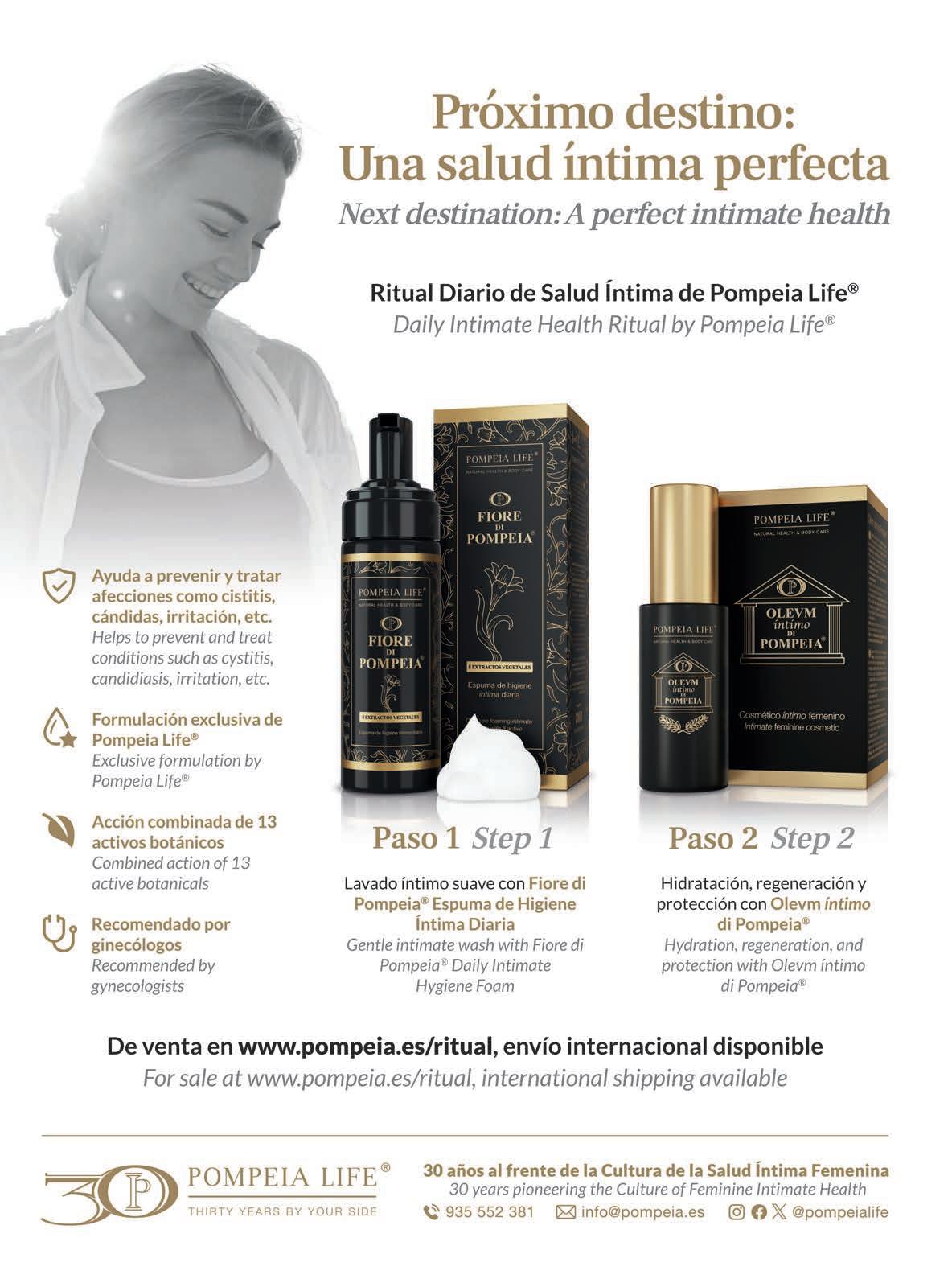








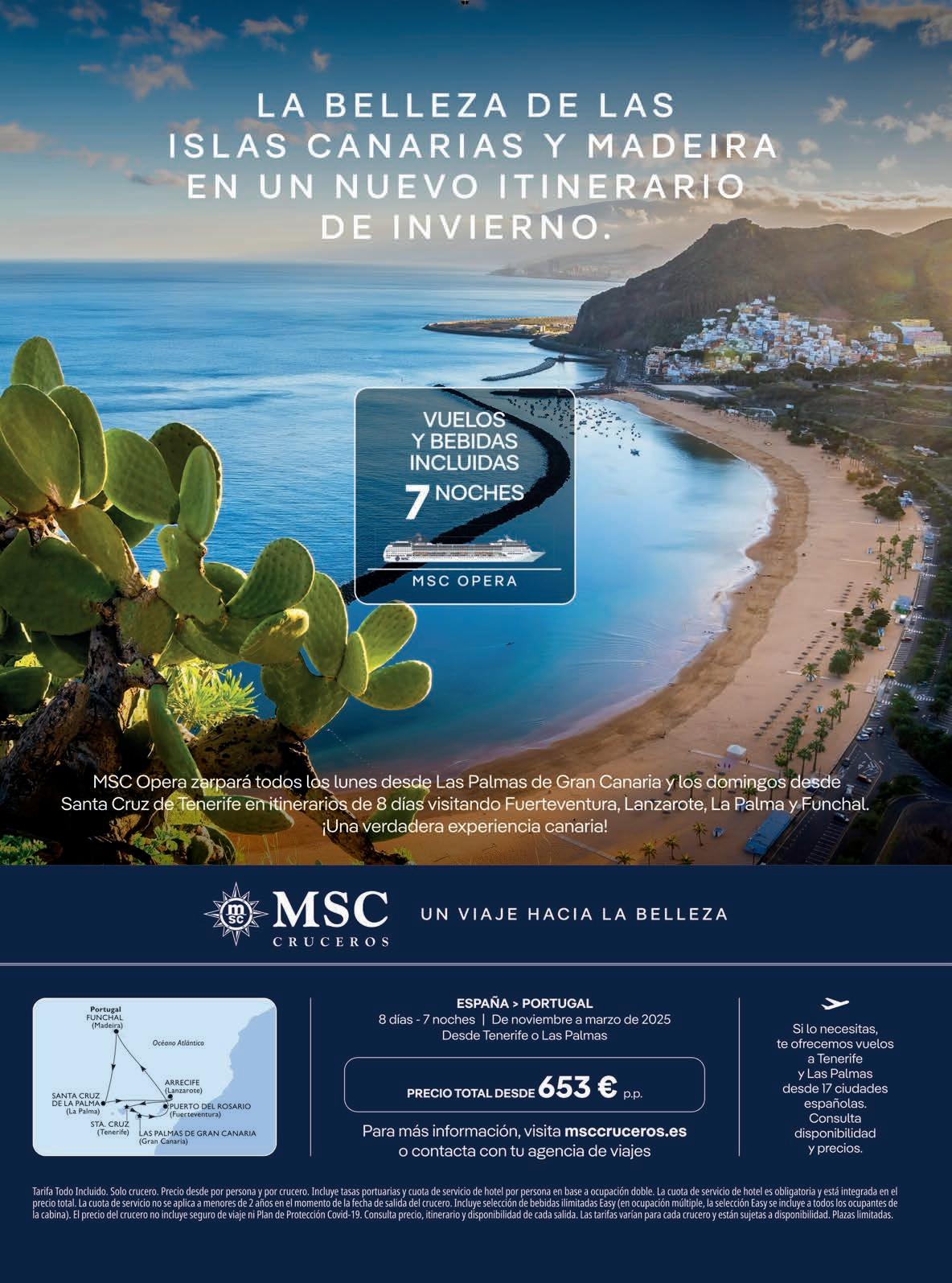

TEXTOS: Desiré Alija


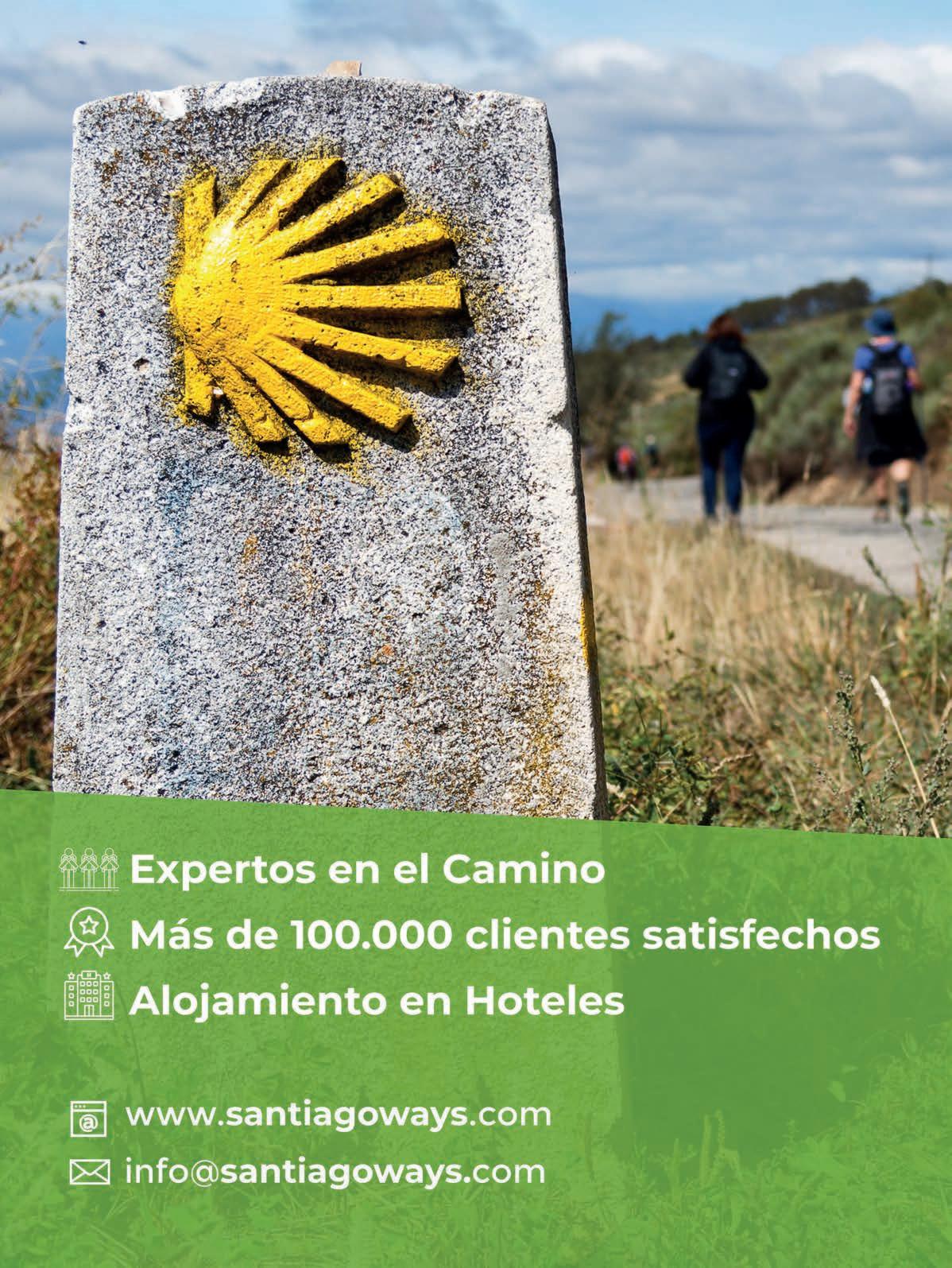


TEXTOS: Desiré Alija

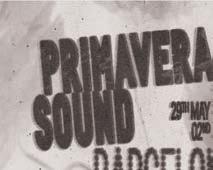
Fecha: todos los domingos desde el 5 de mayo hasta el 30 de junio de 2024
Lugar: L´Incanto Espacio Cultural, Santa Cruz de Tenerife
Más info en: www.tomaticket. es/es-es/entradas-el-principitotenerife
El Laboratorio Actoral Crisol Carabal presenta el musical El Principito, una versión teatral inspirada en la obra de Antoine de Saint-Exupéry, traducida en más de 50 lenguas y considerada uno de los textos más reconocidos de la historia a nivel mundial. Esta adaptación invita a sumergirse en la imaginación a través de elementos creativos fácilmente reconocibles para los más pequeños, al mismo tiempo que ofrece un espectáculo enriquecedor para el público adulto. Esta versatilidad convierte la obra en una opción ideal para personas de todas las edades.
Laboratorio Actoral Crisol Carabal presents the musical The Little Prince, a theatrical version inspired by the work of Antoine de Saint-Exupéry, which has been translated into more than 50 languages and is considered one of the most recognised texts in history worldwide. This adaptation invites the audience to immerse themselves in this imaginary world through creative elements that are easily recognisable for children, while at the same time o ering an enriching show for adult audiences. This versatility makes the play an ideal choice for people of all ages.


Fecha: del 29 de mayo al 2 de junio de 2024
Lugar: Parc del Fòrum, Barcelona
Más info en: www. primaverasound.com/es/ barcelona
El Primavera Sound Barcelona 2024 volverá a hacer vibrar a la ciudad condal con su energía musical incomparable. Desde leyendas del rock hasta talentos emergentes, el festival ofrece una experiencia inolvidable para todos los amantes de la música. Con una mezcla perfecta de artistas internacionales y locales, consolida un año más su posición como uno de los eventos más destacados del panorama musical mundial.
Primavera Sound Barcelona 2024 will once again rock the city of Barcelona with its unrivalled musical energy. From rock legends to emerging talents, the festival o ers an unforgettable experience for all music lovers. With a perfect mix of international and local artists, it consolidates once again its position as one of the most outstanding events on the world music scene.


Fecha: del 29 de mayo al 29 de septiembre de 2024
Lugar: Madrid
Más info en: www.phe.es/ PHotoESPAÑA arranca su programación en el Jardín Botánico de Madrid bajo el tema “Perpetuum Mobile”, una metáfora a la fotografía como medio dinámico. La edición acoge casi un centenar de exposiciones que dialogan sobre el futuro de la fotografía y que buscan expandir la noción de este arte, mostrando la creatividad y diversidad tanto dentro como fuera de nuestras fronteras. Una ocasión perfecta para promover el arte fotográfico, así como fomentar el diálogo y el intercambio de ideas entre profesionales, entusiastas y el público en general.
PHotoESPAÑA kicks o its agenda at the Madrid Botanical Garden under the theme “Perpetuum Mobile”, a metaphor for photography as a dynamic medium. This edition will host nearly a hundred exhibitions that will discuss the future of photography and seek to broaden the concept of this art, showing the creativity and diversity within and beyond our borders. A perfect opportunity to promote the art of photography and to encourage dialogue and the exchange of ideas among professionals, enthusiasts, and the general public.

Fecha: del 14 de junio al 14 de julio de 2024
Lugar: varias localidades
Más info en: es.uefa.com/euro2024/
La Eurocopa 2024 se presenta como el centro de atención del mundo futbolístico, reuniendo a las mejores selecciones del continente en una emocionante batalla por la gloria. La pasión desbordada estos días es más que palpable gracias a los vibrantes partidos y la emoción de las aficiones. Con Alemania como anfitriona, los partidos se disputarán en diez ciudades, como son Múnich, Frankfurt y Düsseldorf.
UEFA European Championship 2024 is set to be the centre of attention in the football world, bringing together the continent’s best teams in a thrilling battle for glory. The passion that is running high these days is more than palpable thanks to the vibrant matches and the excitement of the fans. Hosted by Germany, the matches will be played in ten cities, including Munich, Frankfurt, and Düsseldorf.
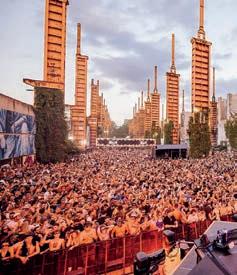







Fecha: del 5 al 7 de julio de 2024
Lugar: Parco Dora, Turín Más info en: www.kappafuturfestival.it/ Tres días de música sin parar, con más de 100 artistas italianos e internacionales turnándose en el escenario para un evento del más alto nivel, considerado una de las realidades más importantes y exitosas de la escena mundial de la música electrónica. Con un enfoque en el techno y en la música house, el festival atrae a miles de aficionados de todo el mundo y ofrece una experiencia única gracias a las instalaciones y actividades adicionales que complementan la experiencia.
Three days of non-stop music, with over 100 Italian and international artists taking turns on stage for a top-level event that is considered one of the most important and successful realities of the world electronic music scene. With a focus on techno and house music, the festival attracts thousands of fans from all over the world and o ers a unique experience thanks to the additional facilities and activities that complete the experience.






















Fecha: 22 de junio de 2024
Lugar: centro deportivo Boutdu-Monde, Ginebra
Más info en: www.atleticageneve.org
Más de 500 atletas de 80 países y 5 continentes se reúnen en Ginebra para el World Athletics Continental Tour Bronze, cita ineludible del deporte. El evento atrae a la élite del atletismo europeo y mundial, y brinda la oportunidad a los jóvenes talentos locales de competir en pruebas como carreras de 100 y 800 metros. La competición promueve valores de deportividad, destacando el compromiso con el juego limpio y la excelencia deportiva.
More than 500 athletes from 80 countries and 5 continents meet in Geneva for the World Athletics Continental Tour Bronze, a mustsee sporting event. The event attracts the elite of European and world athletics and gives young local talent the opportunity to compete in events such as the 100m and 800m races. The competition promotes values of sportsmanship, highlighting the commitment to fair play and sporting excellence.



“En mi vida hago lo que me hace feliz, viajar por el mundo y vivir aventuras”

“I DO WHAT MAKES ME HAPPY IN LIFE: TRAVEL THE WORLD AND HAVE ADVENTURES”
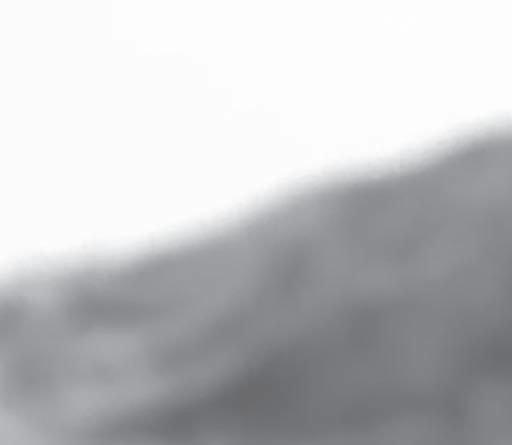

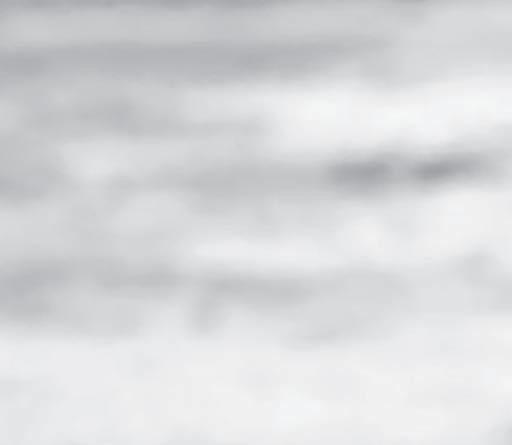
TEXTOS: Adriana Corea




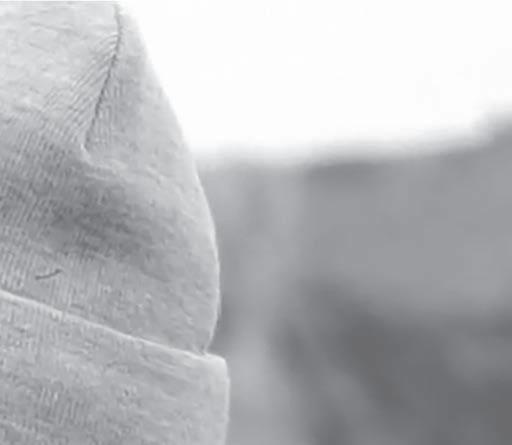
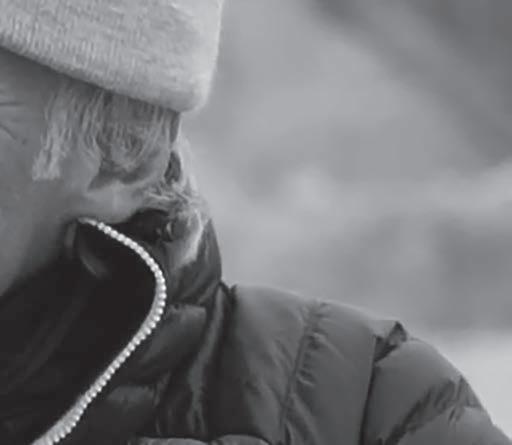

“Soy
ES UNO DE ESOS CASOS EN LOS QUE LOS SUEÑOS DE INFANCIA LLEGARON A BUEN PUERTO. PARA ELLO, ES PRECISO TENER SU DETERMINACIÓN Y PERDER EL MIEDO A LOS CAMBIOS. ESE NERVIO QUE TRANSMITE NO ES DE PASTEL. CUANDO LE ESCUCHAS TE LO CREES. LO MISMO OCURRE CON TODOS LOS INVITADOS DE SU CELEBÉRRIMO PROGRAMA, PLANETA CALLEJA, QUE CUENTAN SUS CONFIDENCIAS MIENTRAS COMPARTEN CON ÉL SU PLATÓ FAVORITO: LA AVENTURA.
En su caso, no hay duda de que es una persona hecha a sí misma. ¿Siempre tuvo claro el rumbo al que se dirigía? Siempre tuve claro lo que quería. De niño soñaba con ser astronauta y, como veía que era inviable, quise conocer el mundo y vivir aventuras. Para mí, el mundo ha sido mi escuela de vida. Tener un objetivo claro va a definir quién vas a ser. Lo más importante es fijarse objetivos para conseguirlos. Decir “me gustaría hacer” y no hacer nada no te lleva a ningún sitio. La vida, que es muy larga, no lo es tanto. Cuando más tardes en ponerte a luchar por tus metas, más tardarás en alcanzarlas. O nunca lo lograrás porque los miedos son muy atenazadores. En eso siempre lo he tenido muy claro, he sido muy decidido.
Para usted el cambio es un motor. ¿Cuál fue la chispa que le animó a liarse la manta a la cabeza y cambiar su vida?
Escribí un libro que se llama Si no te gusta tu vida, ¡cámbiala! en el que hablo de este tema. Tenemos miedo sobre cómo nos vamos a ganar la vida. Ese es el gran freno a hacer cambios. He tenido la suerte de visualizar ese concepto hace mucho tiempo y divido la vida en tres partes. Un tercio de la vida, que no podemos gestionar, es para dormir. Otro tercio es para comer, estar con nuestros familiares, tener ocio… que es agradable. porque lo podemos manejar. Y, el último tercio se puede gestionar, según la voluntad de cada uno. Si uno no es feliz en su trabajo, no es feliz en un tercio de su vida. Siempre he decidido en qué quiero trabajar y cómo hacerlo. Si algo
no me gusta, lo cambio. He tenido negocios que me iban muy bien y, de la noche a la mañana, los he cerrado. En mi vida. hago lo que me hace feliz, viajar por el mundo y vivir aventuras. Cuando he girado hacia un cambio, ha sido a mejor. Eso me ha llevado a donde estoy.
Cada vez hay más personas insatisfechas con su vida… que no hacen nada para cambiarla. ¿Es una cuestión de miedo o de resignación?
Si no eres feliz puede ser por tres causas. Tu vida sentimental no es estable, el trabajo que tienes no te gusta o no estás bien donde estás. Luego está la salud, pero es otro tema. Evidentemente, si no cambias lo que te produce infelicidad vas a seguir igual.
A propósito de miedo, en televisión le hemos visto controlar situaciones peligrosas que a cualquiera le bloquearían. ¿Cómo se consigue?
Es una cuestión de raciocinio, el cementerio está lleno de héroes. Hay actividades que, para llegar a ellas, tienen un extra de inseguridad que manejar. Para que no te pase nada cuando afrontas un riesgo hay que tener plan A, B, C y D. Cualquier cosa que vaya a ocurrir ya la he visualizado, es difícil que algo me sorprenda. El 95% de los alpinistas que van a las grandes montañas desconocen los mecanismos de la altitud, como el mal de altura y la medicación adecuada para salvar la vida. Lo más relevante es tener la mejor información y, después, gestionar el riesgo con cabeza. Nadie de mi equipo, jamás, ha tenido un problema.
“I am exactly the same in real life and on camera”

THIS IS ONE OF THOSE CASES WHEN CHILDHOOD DREAMS COME TRUE. TO ACHIEVE THIS, WE MUST HAVE CALLEJA’S DETERMINATION AND STOP BEING AFRAID OF CHANGE. THE ZEAL HE CONVEYS IS REAL. WHEN YOU LISTEN TO HIM, YOU BELIEVE IT. THE SAME HAPPENS TO ALL THE GUESTS IN HIS FAMOUS SHOW, PLANETA CALLEJA, WHO TELL THEIR SECRETS WHILE SHARING WITH HIM HIS FAVOURITE PURSUIT: ADVENTURE
There is no doubt that you are a self-made person. Did you always know where you wanted to go?
I always knew what I wanted. As a child, I dreamt of becoming an astronaut. When I realised that it was not possible, I wanted to see the world and have adventures. The world was my school of life. Having a clear goal defines who you will become. The most important thing is to set goals in order to achieve them. Saying “I want to do it” and doing nothing will get you nowhere. Life is very long, but not that long. The longer it takes you to start fighting for your goals, the longer it will take you to achieve
them. You might never achieve them because your fears are very powerful. I’ve always been very clear about that; I’ve always been very determined.
Change is a driving force for you. What was the spark that encouraged you to take the leap and change your life?
I wrote a book called If You Don’t Like Your Life, Change It! about this topic. We are afraid of how we are going to make a living. That’s the big deterrent to change. I was fortunate enough to visualise this concept a long time ago, and I divided life into three parts. One third of life, which we can’t man-
age, is for sleeping. Another third is for eating, being with our families, enjoying our leisure time—this is nice because we can manage it. The last third can be managed according to each person’s will. If you are not happy in your job, you are not happy with a third of your life. I have always decided what I want to work on, and how I want to do it. If I don’t like something, I change it. I have had businesses that were doing very well, and I closed them overnight. In my life, I do what makes me happy: travel the world and have adventures. When I’ve made a change, it’s been for the better. It has brought me to where I am now.
¿Qué es el hogar para una persona como usted?
Pues como para todas las personas. Tener un campamento base es muy importante... Yo lo tengo en mi pueblo, en León. Es mi casa. Allí se gestan los proyectos y me relajo viendo a la familia y los amigos. En mi caso, que viajo nueve meses al año, tengo la mente muy abierta para ver el mundo. Encuentro muchos hogares circunstanciales donde estoy muy a gusto. Pensar que lo mejor es lo nuestro y acotar límites a veces trae problemas. La idea original del planeta es que no tiene fronteras, nosotros las hemos marcado. Supongo que tiene que haber fronteras, pero hay que visualizar el mundo como un conjunto. Cuando voy a un lugar, quiero empaparme y conocer su cultura. Me gusta hacerlo por la puerta de atrás, por el lado de la aventura donde la gente se conserva más genuina. Es la manera de tener la mejor percepción del país.
¿Qué encuentra usted en la aventura, especialmente en la montaña?
Mi aventura empezó por querer llegar a los lugares más complejos del mundo, como grandes montañas, desiertos o el fondo del mar. Hay mucho mundo que, para conocerlo, requiere conocimientos técnicos y deportivos. Ciertos deportes, como
el montañismo, se convirtieron en retos. Plantearme esos desafíos es algo estimulante para mí y me preparan para afrontar otros riesgos en la vida. Cumplo cincuenta y nueve años y estoy vivito y coleando porque todo lo he llevado con mesura y cabeza.
¿Cuál es el secreto para que sus invitados se abran con usted de la manera que lo hacen?
La normalidad. Lo más difícil frente a un objetivo es mostrarte cómo eres. Mi virtud es que yo soy exactamente igual en la vida real y ante una cámara. Yo no hago una entrevista en un plató donde es difícil generar empatía con los invitados. Cuando vienen conmigo a un rodaje estamos conviviendo veinticuatro horas al día y se genera un vínculo. Todos se han convertido en mis amigos y eso crea en ellos una manera diferente de expresarse. Lo que aflora siempre es verdad. Te vas a encontrar a la persona, no al personaje.
Después de hacer de los viajes una parte importante de su trabajo, ¿le quedan ganas para viajar por placer? ¡Constantemente! Puedo llegar de un viaje, descansar cuatro días e irme a hacer una ruta en bicicleta por Utah, por ejemplo. Acabé un programa, hace veinticuatro horas, y ya me puse rumbo a la India. Me apetecía ver a mis amigos, porque allí trabajé como guía durante mucho tiempo. Soy fiel a mis principios de seguir viajando y conocer el mundo desde el ángulo de la aventura.

“Cuando más tardes en ponerte a luchar por tus metas, más tardarás en alcanzarlas”

More and more people are dissatisfied with their lives, but they don’t do anything to change them. Is it out of fear, or resignation?
If you are unhappy, it can be for three reasons. Your love life is not stable, you don’t like your job, or you’re not happy where you are. Then there’s your health, but that’s another matter. Obviously, if you don’t change what’s making you unhappy, you’ll stay the same.
“The longer it takes you to start fighting for your goals, the longer it will take you to achieve them”
Speaking of fear, we have seen you on television controlling dangerous situations that would make anyone freeze. How do you do it?
It’s a matter of common sense; the graveyards are full of heroes. Some activities require to deal with an extra layer of safety. When you face a risk, you must have a plan A, B, C and D to avoid anything happening to you. Whatever is going to happen, I have already visualised it. It is di cult for anything to surprise me. 95% of the mountaineers who travel to the highest mountains don’t know how altitude works. They aren’t aware about altitude sickness, or about the right medication to save their lives. The most important thing is to have the best information and then to manage the risk wisely. Nobody in my team has ever had a problem.
“El mundo ha sido mi escuela de vida”
What is home for a person like you?
Well, the same as for everyone else. Having a base camp is very important. Mine is in my village, in León. It is my home. That’s where projects are developed and where I can relax and see my family and friends. Since I travel for nine months a year, I have a very open mind to see the world. I find many temporary homes where I can feel very comfortable. Thinking that our reality is the best in the worlds and being narrow-minded sometimes brings problems. Originally, the planet had no boundaries; we have created the borders. I guess we need borders, but you have to think of the world as a whole. When I go to a place, I want to immerse myself in the culture and learn. I like to do it through the back door, through adventure, where people are more authentic. That’s the best way to get a feel for the country.
What do you find in adventure, especially in the mountains?
My adventure started by wanting to get to the most complex places in the world, like big mountains, deserts, or the bottom of the sea. A large area of the world requires technical and sporting knowledge to get to know it. Certain sports, such as mountaineering, became challenges to me. I find these challenges stimulating and they prepare me to face other risks in life. I am fifty-nine years old, and I am still alive because I have done everything with moderation and a clear head.
What’s the secret to getting your guests to open up to you the way they do?
Being normal. The hardest thing

“The world has been my school of life”
to do in front of a camera is to be yourself. My virtue is that I am exactly the same in real life and on camera. I don’t do an interview on a set because it’s di cult to create a connection with the guests. When they come to a shoot with me, we live together twenty-four hours a day, creating a bond. They have all become my friends and that allows them to express themselves di erently. What comes out is always true. You get to know the person, not the character.
Having made travel an important part of your day job, do you still feel like travelling for pleasure?
All the time! I can come back from a trip, rest for four days, and go for a bike ride in Utah, for example. I finished a show twenty-four hours ago and I’m already on my way to India. I wanted to see my friends because I worked there as a guide for a long time. I am staying true to my principles of keeping travelling and seeing the world from an adventurous point of view.

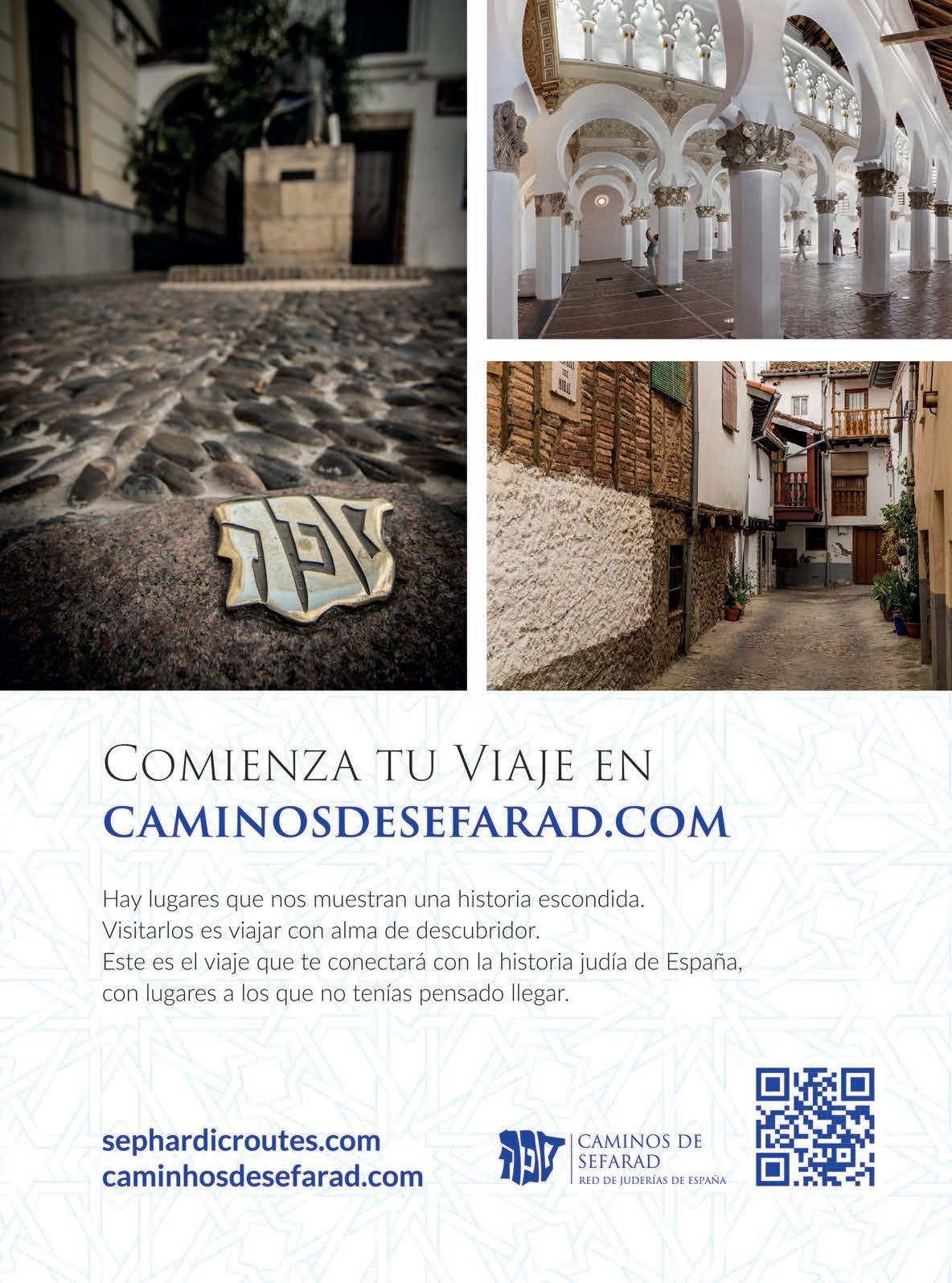



TEXTOS: Cecilia Ordás / FOTOS: Valencian Community Tourism
Dicen que el atardecer de La Albufera es uno de los más hermosos del mundo. El sol se rinde y cae de lleno sobre el agua. Como una pirueta de trampolín en la piscina. La música la brinda el coro de aves que agota los últimos latidos del día. La visión es idílica.
It is said that the sunset at La Albufera is one of the most beautiful in the world. The sun surrenders plunging into the water, like a springboard diver. The music is provided by the chorus of birds making the most of the fading remnants of the day. An idyllic scene.
Por fortuna, la estampa se repite, cada día, para deleite de los visitantes que se acercan a contemplar uno de los paraísos naturales más impactantes de la Comunitat Valenciana. El Parque Natural de La Albufera es un vaso de vida. Situado a tan solo 15 km de la capital valenciana, alberga el lago natural más grande de España. Su dibujo impresiona por los reflejos metálicos del agua, acompasada por el canto de las aves.
El parque comprende el área del lago, los arrozales y la Devesa, un paisaje que da cobijo a numerosas especies que repostan entre la fértil vegetación. Las dimensiones son apabullantes. La Albufera tiene una extensión aproximada de 24 km².
En este insólito vergel conviven más de 2.000 especies de aves autóctonas y migratorias. Las garzas reales, gallinetas o calamones campan a sus anchas entre los juncos. También las anguilas, tencas, mújoles y una larga lista de mamíferos, como ratas de agua, ranas, zorras o conejos, componen un espectáculo biológico de valor incalculable.
La mejor forma de visitar el lago es a través de un paseo en barca. En los embarcaderos se encuentran las típicas albuferenc o barcas levantinas. Si se navega al atardecer, la estampa es un remanso de serenidad.
El agua que nutre el lago proviene de los ríos Júcar y Turia. Alrededor de esta gran bolsa surgen cientos de canales y acequias que aportan sensación de movimiento. Y se ramifican a modo de arterias que integran el parque para amamantar una vasta riqueza biológica.


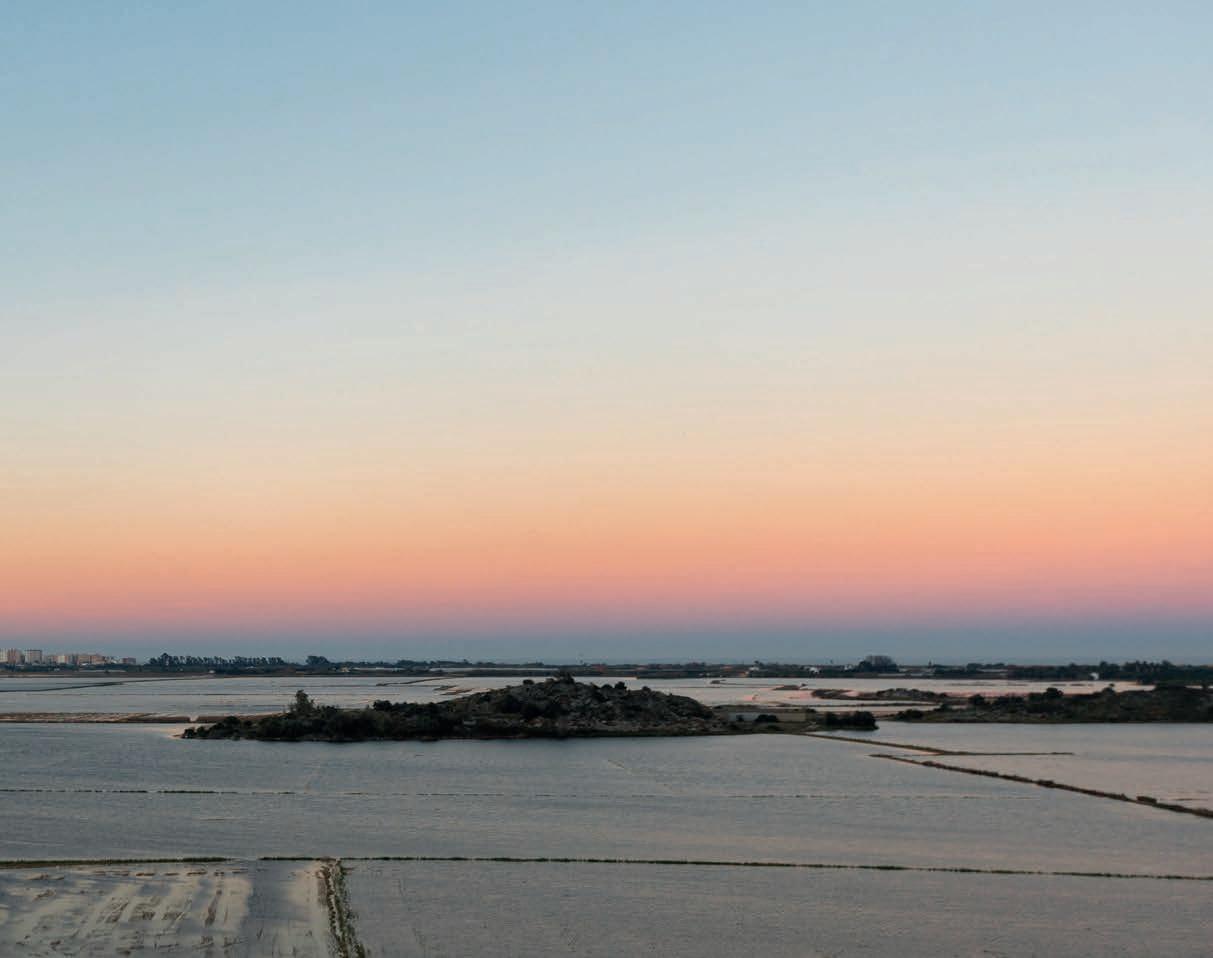

Fortunately, this image takes place every day, to the delight of visitors who come to see one of the most impressive natural paradises in the Valencian Community. The Albufera Natural Park is a glass full of life. Located just 15 km from the Valencian capital, it is home to the largest natural lake in Spain. It is characterised by the metallic reflections on the water and the rhythm of birdsong.
The park includes the lake area, the rice fields and the Devesa, a landscape that provides shelter to numerous species that refuel among the lush vegetation. Its dimensions are overwhelming. The Albufera covers an area of about 24 km².
Amor o pasión por los atardeceres. Hay muchos enclaves singulares para dejarse seducir por una inolvidable puesta de sol en la Albufera. El embarcadero «El Tío Pastilla» es una apuesta segura.
A love or passion for sunsets. There are many unique places to be charmed by an unforgettable sunset in the Albufera. The El Tío Pastilla pier is a safe bet.
More than 2,000 species of native and migratory birds coexist in this unusual orchard. Grey herons, gallinules and western swamphens roam freely among the reeds. Eels, tench, mullets, and a long list of mammals, such as water rats, frogs, foxes and rabbits, make up a living spectacle of incalculable value.
The best way to visit the lake is by boat. At the piers you will find the traditional Albuferenc or Levantine boats. If you set sail at sunset, the picture is a haven of serenity.
The water that feeds the lake comes from the Júcar and Turia rivers. Hundreds of canals and irrigation ditches surround this large area, creating
Rodean al lago grandes extensiones de campos de arroz o tancats, que han servido de inspiración a grandes joyas de la literatura española: Cañas y Barro, de Blasco Ibáñez, es quizá el mejor ejemplo.
La Devesa del Saler es el espacio del parque que separa el mar del lago. Está formada por una espesa zona de pinos y arbustos que limita con el espectacular cordón de dunas y playas de arena dorada.
En el parque natural emerge una construcción típica: la barraca. Casa humilde que simboliza la esencia del lugar, con tejado de juncos y carrizo. Los atardeceres dejan al descubierto hermosas siluetas de algunas barracas. La escena del sol fundiéndose como un hierro incandescente en el agua es tan delicada como el cristal.
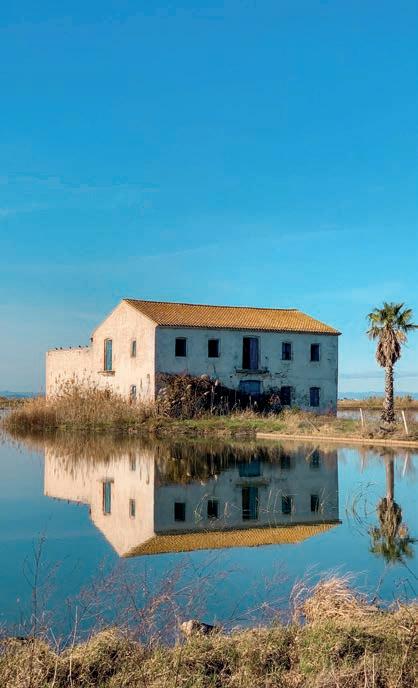

a sense of movement. And they branch out like arteries criss-crossing the park to nourish its rich biodiversity.
Surrounding the lake are large expanses of rice fields, or tancats, which have served as the inspiration for some gems of Spanish literature: Cañas y Barro by Blasco Ibáñez is perhaps the best example.
The Devesa del Saler is the part of the park that separates the sea from the lake. It is made up of a dense area of pine trees and bushes that border a spectacular series of dunes and golden sand beaches.
In the natural park you can find a traditional building: the barraca, a modest house that symbolizes the essence of the place, with reed and wattle roofs. The sunsets reveal the beautiful silhouettes of a few barracas. The scene of the sun melting into the water like red-hot iron is as delicate as crystal.

CÓMO LLEGAR: Autobús EMT, línea 25 Valencia-Perellonet, pasando por Pinedo, el Saler, Gavines y El Palmar.
Autovía del Saler CV-500 situada al sur de la ciudad de Valencia. Llega hasta el Perelló y atraviesa todo el Parque Natural.
Desde las 10:00 am hasta la puesta de sol. Para excursiones programadas, los paseos pueden ser antes de las 10:00 am. El paseo en barca dura unos 45 minutos.
Lunes a viernes y fines de semana. Embarcaderos situados junto al lago del Parque Natural.
Los paseos en barca pueden realizarse en pareja o en grupos. Visitar la albufera con niños es ideal para disfrutar de las aves y la naturaleza en estado puro.
Entre los canales y acequias hay garzas reales, patos azulones y gallinetas. La profundidad media del lago es de 1 metro.
UN PLAN PERFECTO: llegar al pueblo de El Palmar comerse una paella típica y dar un paseo en barca.
HOW TO GET THERE: EMT bus, line 25 Valencia-Perellonet, passing through Pinedo, El Saler, Gavines and El Palmar.
Saler CV-500 country road located south of the city of Valencia. It goes as far as El Perelló and crosses the entire Natural Park.
From 10:00 am until sunset. Scheduled tours may depart before 10:00 am. The boat ride lasts about 45 minutes.
Monday to Friday and weekends. The piers are located next to the lake in the Natural Park.
The boat trips can be done in pairs or in groups. Visiting the lake with children is ideal for enjoying birds and nature in its purest form.
Among the canals and ditches there are grey herons, mallard ducks and coots. The average depth of the lake is 1 metre.
A PERFECT PLAN: Arriving in the village of El Palmar, eating a traditional paella, and enjoying a boat ride.


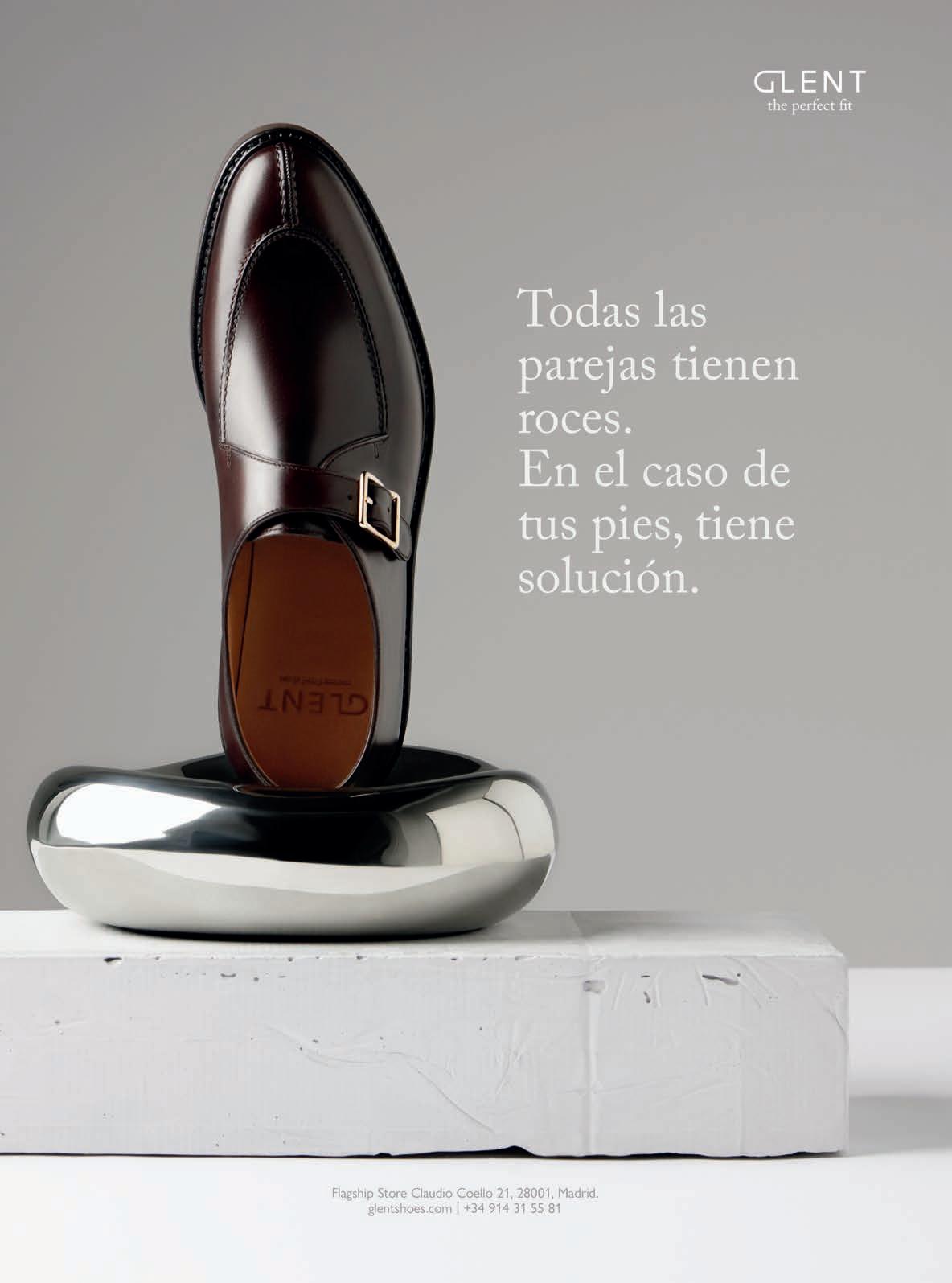








“Intento cortarme lo menos posible y ser absolutamente libre”


“I TRY TO HOLD MYSELF BACK AS LITTLE AS POSSIBLE AND BE ABSOLUTELY FREE.”

TEXTO: Luis Tejedor | FOTOS: Cuarzo Producciones










“Es difícil defender algo en lo que no crees”
CON CASI TREINTA AÑOS DE CARRERA EN LA TELEVISIÓN, QUE YA SON AÑOS EN ESTE MEDIO CANÍBAL, NURIA ROCA ES UNA DE ESAS PRESENCIAS QUE PARECE CONOCERSE DE TODA LA VIDA. HOY ES LA DIOSA DE LAS TARDES DOMINICALES Y SE HA EMPEÑADO EN SALPIMENTAR LAS HORAS MÁS SOSAS DE LA SEMANA. PARA ELLO, CUENTA CON SU FRESCURA, MARCA DE LA CASA, Y UNA ILUSIÓN DIGNA DE UN PRIMER DÍA DE OFICINA.
Con una carrera como la suya, es una presentadora veterana. ¿Cómo se ve el éxito y el fracaso desde esa posición?
Es una constante y una consecuencia de tu trabajo. Hay cosas que funcionan y cosas que no. Tienes que estar preparado para los dos casos y, sobre todo, valorar cuando los proyectos son buenos y estás a gusto con ellos. Después de haber pasado por todas partes, en cadenas y formatos diferentes, cuando tienes entre manos algo que te gusta hay que cuidarlo.
Treinta años en la tele dan para ver muchos cambios…
¡Claro! Imagínese, desde no tener pinganillo –cuando yo empecé– a no tener cue porque solo se usaba para informativos. Ha cambiado la televisión, la publicidad y los soportes, que ahora son diferentes. Lo interesante es lo que no cambia, que es lo que hay que cuidar. Cuando uno se pone a hacer un programa, te lo tienes que creer. Tienes que pensar en el que está al otro lado de la pantalla y ser un espectador de tu propio programa, disfrutarlo. Es difícil defender algo en lo que no crees.
Vivimos en un país de extremos, pero usted le cae bien a todo el mundo. ¿Cuál es el truco?
No se crea. No me gustaría caerle bien a todo el mundo porque eso debe ser aburrido. Sí es cierto que tengo una imagen bastante blanca que lleva a la gente a empatizar conmigo, independientemente que opine diferente. Tampoco soy una persona histriónica. Intento no molestar. Eso sí, yo me mojo y, a medida que voy teniendo arrugas, cada vez más. Empatizar no quiere decir que la gente opine como yo, sino que no le molesta. Ahí siempre he tenido un punto a favor.
Las redes sociales, más que foros, se han convertido en tribunales. ¿Se corta para no pisar callos ajenos?
Intento cortarme lo menos posible y ser absolutamente libre, sin pensar en lo que van a decir los demás. Es verdad que las cosas que haces tienen consecuencias y, como tal, tienes que aceptarlas. Yo sé perfectamente cuando un comentario va a ser polémico y voy recibir críticas por algo, pero no dejo de hacerlo. Eso es importantísimo. Tú tienes que ser quien eres. A partir de aquí, lidiar con todo y defenderlo.
“It is di cult to advocate for something you don’t believe in”

WITH A CAREER SPANNING AN INCREDIBLE 30 YEARS IN THE VORACIOUS TV INDUSTRY, NURIA ROCA IS ONE OF THOSE FAMILIAR FACES YOU FEEL YOU HAVE KNOWN FOREVER. TODAY SHE RULES THE WAVES ON SUNDAY AFTERNOONS, DETERMINED TO BRIGHTEN UP THE DULLEST HOURS OF THE WEEK. TO DO SO, SHE RELIES ON HER TRADEMARK LIVELINESS AND THE EXCITEMENT OF STARTING A NEW JOB.
After so many years, you have now become a veteran host. How do you see success and failure from that position? It’s a constant and a consequence of what you do. There are things that work and there are things that don’t. You have to be prepared for both, and especially appreciate the good projects, the ones that make you feel comfortable. After working everywhere, in di erent channels and formats, when you have something you like in your hands, you have to cherish it.
Thirty years in television are enough time to witness a lot of changes. Of course! Just imagine that when I started, I did not have an earpiece or a cue because it was only used for the news. The television, advertising, and media industry has changed, it is di erent today. What’s interesting is the things that haven’t changed, that’s what we have to
take care of. When you start making a show, you have to believe in it. You need to think about the person on the other side of the screen. You have to become the audience of your own programme and enjoy it. It is dicult to advocate for something you don’t believe in.
We live in a land of extremes, but everyone likes you. What’s the magic recipe? Don’t get too full of yourself. I wouldn’t want everyone to like me because that would be boring. It is true that I have a fairly neutral image that makes people empathise with me, regardless of whether they have a di erent opinion. I am also not a theatrical person. I try not to be annoying. I obviously get involved and care, more and more as I get older. Empathising doesn’t mean that people are thinking like me, but that it doesn’t bother them. That’s where I’ve always had an edge.
En un contexto tan medido como la televisión, usted transmite espontaneidad y frescura. Eso no se puede impostar, ¿no?
La tele no está tan guionizada. Sí que hay una escaleta a la que ceñirse. Pero, imagínese que durante un programa de cuatro horas hubiera que seguir un guion. ¡Sería imposible! Tienes que saber qué quieres contar, qué quieres transmitir y cómo lo vas a hacer. A partir de ahí, la horquilla es muy amplia. A mí lo que más me gusta es el directo y la improvisación, el no saber qué va a pasar. Eso es tremendamente atractivo.
Cada vez que veo La Roca, me da la impresión de que es su primer programa. ¿Cómo diablos se consigue esquivar la rutina?
(Ríe) No sería capaz de involucrarme en un proyecto en el que no tuviera ilusión. He rechazado cosas buenas porque no me han ilusionado. Si no me llaman la atención, soy incapaz de transmitirlo y defenderlo. Es crucial ilusionarse con lo que uno hace. Llevamos 102 programas en La Roca y el próximo domingo será como el primero.
¿Cómo vive la competencia?
¿Los audímetros le quitan el sueño?
No me obsesionan, pero vivo con ello. Hoy, lunes, lo primero es mirar los datos de audiencia. Nos dice lo que valemos en cada momento. Es injusto, pero es así. Tienes que tener buenos índices y que te vaya bien. Hay veces que a un programa bueno le acompaña la audiencia y veces que no es así. Todos somos conscientes de ello.
La celebridad de la tele no la da ningún medio. A estas alturas, ¿cómo lleva lo de ser conocida en todas las casas?
De la manera más natural posible. Como he crecido y evolucionado con ello ni me molesta ni me impacta. Es una cosa más de mi trabajo. Cuando la notoriedad que tienes es positiva, es fantástico. Cuando no, es más farragoso, aunque se lidia igual con ello.
La hemos escuchado en la radio, visto como actriz y leído como escritora. ¿Lo de las zonas de confort no va con usted?
A mí me mueve la inquietud, el querer aprender constantemente. Cuando tengo la oportunidad de explorar algo desconocido, me lanzo si creo que puedo dar una buena versión. Que me sigan sorprendiendo estas cosas a estas alturas de la película, es un lujo. Lo seguiré haciendo siempre que pueda descubrir cosas que no conozca y me pueda implicar.
¿Cómo desconecta de la presión en la que vive? ¿Son los viajes, para usted, una buena manera de hacerlo? ¿Algún destino favorito?
Me encanta viajar. Me encantan los aeropuertos y subirme a un avión. Los trayectos siempre se me hacen cortos porque es un momento maravilloso. Ese momento hasta que llegas es muy gozoso. Disfruto de conocer lugares y de volver a donde me lo he pasado bien. Un viaje es la mejor manera de despejar la mente. Es verdad que me agotan físicamente porque ando mucho, veo muchas cosas… Te cansas, pero mentalmente son reparadores.


“Me gusta el directo y la
Social media has become a courtroom rather than a forum. Do you try to hold yourself back to avoid problems?
I try to hold myself back as little as possible and be absolutely free, and not think about what others are going to say. It’s true that your actions have consequences and, as such, you have to accept them. I know perfectly well when a comment is going to be controversial and I’m going to be criticised for something, but I don’t stop myself from doing it. That is very important. You must be who you are. Then you must deal with everything and stand by it.
In a context as controlled as television, you bring spontaneity and liveliness. You can’t fake that, can you?
Television is not so scripted. There is a script to follow but imagine if you had to follow a script for a four-hour show. It would be impossible! You must know what you want to say, what you want to convey and how you want to do it. Once that’s established, there are many options. What I like most is the live performance and the improvisation, not knowing what’s going to happen. That’s very appealing.
Every time I watch La Roca, I feel like it’s your first show. How on earth do you manage to avoid routine?
[Laughs] I wouldn’t be able to work on a project If I wasn’t excited about it. I’ve turned down good things because they didn’t excite me. If a project doesn’t pique my interest, I’m unable to convey it properly and represent it. Being excited about what you do is paramount. We have been in La Roca for 102 shows, and next Sunday will feel like the first one.

“I like the live performance and the improvisation, not knowing what’s going to happen”
How do you feel about competition? Do TV ratings keep you up at night?
I don’t get obsessed, but I live with it. Every Monday, the first thing we do is look at the audience ratings. It tells us what we are worth at any given moment. It’s unfair, but that’s the way it is. You must have good ratings and do well. There are times when a good show has an audience and times when it doesn’t. We all know that.
TV makes people famous like no other medium. At this point, how do you deal with being a household name?
In the most natural way possible. As I’ve grown and evolved with it, it doesn’t bother me or a ect me. It’s just another part of what I do. If your popularity is positive, it’s fantastic. When it’s not, it’s more inconvenient, although you deal with it the same way.
We have heard you on the radio, seen you as an actress and read about you as a writer. Is it not your thing to be in your comfort zone?
I’m driven by restlessness, by the desire to keep learning. If I have the opportunity to explore something unknown to me, I jump in if I think I can do a good job. To be surprised by these things at this stage in the game is a privilege. I’ll keep doing it as long as I can discover new things and get involved.
How do you unwind from the pressure you live under? Is travelling a good way to deal with it? Any favourite destinations? I love travelling. I love airports and getting on a plane. The journeys always feel short because it’s a wonderful moment. That time until you arrive is very joyful. I enjoy seeing places and going back to where I’ve had a good time. Travelling is the best way to clear my mind. It’s true that they exhaust me physically because I walk a lot. I see a lot of things and get tired, but they are mentally reinvigorating.



El verano se adelanta cada vez más y con ello, el cambio de temporada y las piernas y brazos al aire nos piden a gritos un bronceado de urgencia. Los autobronceadores siguen siendo la mejor opción para lucir una piel más bronceada sin pisar la playa y sin riesgo al temido daño solar. Son cómodos, rápidos y gracias a las nuevas fórmulas dejan un aspecto más natural en la piel.
Mi mejor consejo es no saltarse los pasos previos: exfoliación e hidratación el día anterior, de lo contrario por muy bueno que sea el producto que utilicemos no conseguiremos un resultado 10. Hoy en día la gama de autobronceadores es infinita. Hagamos un repaso de los más destacados.
Every year, summer seems to come earlier, and with the change of season our bodies are desperately crying out for a tan. Self-tanning products are still the best way to show o sun-kissed skin without going to the beach or worrying about sun damage. They are convenient, fast and, thanks to new formulas, give the skin a more natural look.
My top tip is to make sure you exfoliate and moisturise the day before: otherwise, no matter how good the product is, you won’t get a perfect result.
Nowadays, there’s a huge range of self-tanning products to choose from. Let’s take a look at the best ones.

LANCASTER SUN 365, contiene ingredientes que ayudan a conseguir un aspecto saludable y moreno durante bastante tiempo. Su formulación, que imita el color del bronceado natural, se funde muy bien en la piel y deja un aspecto brillante todo el día.

LANCASTER SUN 365, contains ingredients that help maintain a healthylooking tan for longer. Its formula, which mimics the tone of a natural tan, blends easily into the skin, and leaves a glowing appearance all day long.



ST. TROPEZ es una de las marcas líderes en autobronceadores y está especializada en el desarrollo de fórmulas innovadoras, con las que conseguir un acabado natural y sin olor y, por supuesto, sin los riesgos del sol. Dentro de su amplio catálogo encontrarás desde guantes autobronceadores hasta mouse exprés que te broncea en una hora o esta última Bronzing water gel.
ST. TROPEZ is one of the leading self-tanning brands and specializes in the development of innovative formulas that provide a natural, odourless finish without the risk of sun damage. Check out their wide range of products from self-tanning mitts to the Express Bronzing Mousse, giving a sun-kissed glow in just an hour, or the Self-Tan Purity Bronzing Water Gel, pictured here.












COLLISTAR,
aporta un excelente bronceado con solo unas pocas gotas. Además, contiene Vitamina E que ayuda a proteger e hidratar la piel. Se extiende muy fácilmente por todo el cuerpo y se absorbe de inmediato, permitiendo vestirse enseguida.
COLLISTAR,
just a few drops are needed for a great tan. Containing vitamin E to protect and moisturize the skin, this silky formula spreads easily over the body and is immediately absorbed, allowing you to get dressed immediately.





SEPAI Tan V6 8Pro, no es un autobronceador propiamente dicho, sino que actúa antes, durante y después. ‘Antes’ proporciona un bronceado dorado estimulando la síntesis de la melanina; ‘durante’ ejerce una acción antioxidante, protegiendo de los radicales libres y ‘después’ mantiene el bronceado durante casi dos semanas… ¿Podemos pedir más?
SEPAI Tan V6 8Pro, not a self-tanner as such, but works before, during and after. “Before” gives a golden tan by stimulating melanin synthesis; “during” has an antioxidant e ect, protecting against free radicals while “after” prolongs the tan for almost two weeks. What more could you ask for?
COMODYNES, nada más cómodo y práctico que estas toallitas auto bronceadoras si tenemos que meter este producto en la maleta de viaje. Se aplican fácilmente tanto en la cara, cuello y escote como en el resto del cuerpo. Todo es cuestión de paciencia y proporciona un bonito bronceado en solo tres horas.
COMODYNES, nothing is more convenient and practical than these self-tanning wipes when travelling. Easy to apply to the face, neck and neckline, as well as to the rest of the body, they provide a natural and uniform tan within 3 hours of application.

NATURA BISSÉ,


Self-tan drops, ideal para cara, cuello y escote y es mi preferido. Contiene un 95% de ingredientes de origen natural y proporciona un bronceado gradual absolutamente brillante que se adapta a todas las tonalidades de piel y tiene un delicioso aroma a cítricos.
NATURA BISSÉ, C+C Vitamin
Self-Tan Drops, ideal for face, neck and neckline, is my favourite. Containing 95% natural ingredients, this citrus-scented self-tanning fluid adapts to di erent skin tones to give a radiant, golden glow.







vision of
Fue en 1992. Dos años antes del despegue de Air Nostrum, España regresó con fuerza al escenario internacional. El país se convirtió en centro de atención mundial con la celebración de unas exitosas Olimpiadas en Barcelona y una magnifica Exposición Universal en Sevilla. La inauguración de los servicios ferroviarios de alta velocidad marcó un hito en la modernización de los transportes y Madrid se convirtió en capital europea de la cultura.
También en aquel año luminoso, dos treintañeros de la capital, Luis Moreno Mansilla y Emilio Tuñón Álvarez fundaron M+T, un estudio de arquitectura que con el tiempo recibió premios tan importantes como el FAD, el Mies van der Rohe y La Medalla de Oro al Mérito en las Bellas Artes del Gobierno de España.
En las dos décadas que trabajaron mano a mano, estos arquitectos levantaron edificios notables. Uno de los más célebres está en la provincia protagonista de este número: el MUSAC o Museo de Arte Contemporáneo de Castilla y León, una de las tres partes de este ‘tercetos con historia’ en León, Vigo y Cáceres ciudades que tienen a Mansilla y Tuñón como su denominador común.
It was in 1992. Two years before Air Nostrum took o , Spain made a strong comeback on the international scene. The country became the centre of world attention with the celebration of a successful Olympic Games in Barcelona and a magnificent World’s Fair in Seville. The inauguration of the high-speed train marked a milestone in transport modernisation, and Madrid was named European Capital of Culture.
It was also in that glorious year when two men in their 30s from the capital, Luis Moreno Mansilla and Emilio Tuñón Álvarez, founded M+T, an architecture firm that would go on to receive major awards such as the FAD, the Mies van der Rohe and the Gold Medal for Merit in Fine Arts from the Spanish government.
In the two decades in which they worked hand in hand, these architects created remarkable buildings. One of the most famous is located in the province that is the subject of this issue: the MUSAC or Museum of Contemporary Art of Castilla y León. It is one of the three lines of this “historical tercet” in the cities of León, Vigo and Cáceres, which have Mansilla and Tuñón as their common denominator.
JAVIER ORTEGA FIGUEIRAL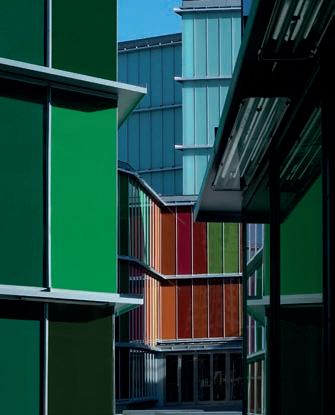
MUSAC
El año que viene se cumplirán dos decadas de la inauguración de uno de los iconos arquitectónicos de la capital de León. Antes de su nacimiento, este lugar fue llamado a ser ‘el museo del siglo XXI’. Ubicado en el 24 de la Avenida de los Reyes Leoneses, el MUSAC tiene también a 1992 como año de referencia, pues en sus primeros compases como centro de exposiciones, Rafael Doctor Roncero, historiador del arte, escritor y director del museo, decidió exponer únicamente obras creadas a partir del 92, con lo que el MUSAC tuvo un marcado carácter de ‘museo del presente’.
Su segundo director, Agustín Pérez Rubio, flexibilizó esa norma y abrió más el abanico temporal de lo que se podía exponer y disfrutar en este edificio de nueva planta, obra de Mansilla y Tuñón, que dos años después de entregar este trabajo en León, recibieron el galardón de Arquitectura Contemporánea de la Unión Europea, más conocido por premio Mies van del Rohe. Con este reconocimiento, los madrileños unieron su nombre a los de otros compañeros que lo ganaron, como Foster, Moneo, Siza o Perrault.

MUSAC
Next year will mark two decades since the inauguration of one of the architectural icons of the capital of León. Before its birth, this place was called “the museum of the 21st century”. Located at 24 Avenida de los Reyes Leoneses, the MUSAC also has 1992 as a reference year. In its early days as an exhibition centre, Rafael Doctor Roncero, art historian, writer and director of the museum, decided to exhibit only works created after 1992, so that the MUSAC would have a distinct character as a “museum of the present”.
His second director, Agustín Pérez Rubio, made this rule more flexible and expanded the temporal range of what could be exhibited and enjoyed in this new building. This included the work by Mansilla and Tuñón who, two years after debuting in León, received the European Union Prize for Contemporary Architecture, better known as the Mies van der Rohe Prize. With this recognition, the Madrid architects added their names to those of other laureates such as Foster, Moneo, Siza, and Perrault.
MUSAC LEÓN | SPAINEl coruñés Pedro Barrié de la Maza, primer conde de Fenosa, fue uno de los personajes más importantes en la Galicia de la primera mitad del siglo XX. Este empresario y financiero tocó prácticamente todos los sectores e impulsó un buen número de proyectos de calado en su tierra, incluido el aeropuerto de Coruña-Alvedro.
En 1966 creó una fundación para promover el desarrollo y la cultura en Galicia a la que declaró heredera universal de su fortuna, un capital al que se añadió parte del patrimonio de otros familiares. Con una primera sede en A Coruña, la Fundación Barrié consiguió un importante reconocimiento por haber creado uno de los programas de becas para estudiantes de postgrado más prestigioso de España, centrado en el compromiso de los seleccionados con el desarrollo económico de Galicia.
Desde su creación, la institución ha estado vertebrando un buen número de proyectos tanto en lo cultural como en lo social. Con sede en la ciudad natal de su fundador, en 2005 la Barrié abrió un segundo emplazamiento en Vigo para acercar su actividad al sur gallego y desarrollar aún más actividades. Ubicada en el antiguo banco de Vigo, un majestuoso edificio de 1919, Mansilla y Tuñón recibieron el encargo de convertir esas antiguas oficinas en un centro de exposiciones contemporáneo, sin tocar la fachada original. Los arquitectos ganaron varios premios por ese trabajo.
En la última guía Michelin de restaurantes españoles, únicamente 15 lucen el máximo galardón, las míticas tres estrellas. De esta categoría, sólo hay uno extremeño en la lista: Atrio, en Cáceres, que también es el único Relais & Chateaux de esta comunidad autónoma fronteriza con Portugal.

El Laureado restaurante de José Polo y Toño Pérez es destino para gastrónomos de medio mundo. Atrio abrió en 1986, la primera estrella se ganó en 1994 y a partir de ese reconocimiento, la fama de este rincón de alta cocina en el centro de Cáceres se multiplicó exponencialmente. De cara a ampliar el negocio y aprovechar el éxito del establecimiento con clientes llegados de todas partes, en 2010 se complementó el elegante comedor con un impecable hotel de 14 habitaciones encargado a Mansilla y Tuñón.
La idea del hotel fue tan acertada, que posteriormente la oferta para pernoctar se amplió. Emilio Tuñón, esta vez en solitario, volvió a ser el encargado de rehabilitar un edificio histórico: una casa de piedra del siglo XIII a pocos metros de la casa madre. Lo convirtió en otro hotel de lujo con 11 habitaciones: Casa Paredes, en el antiguo palacio de los Paredes-Saavedra.
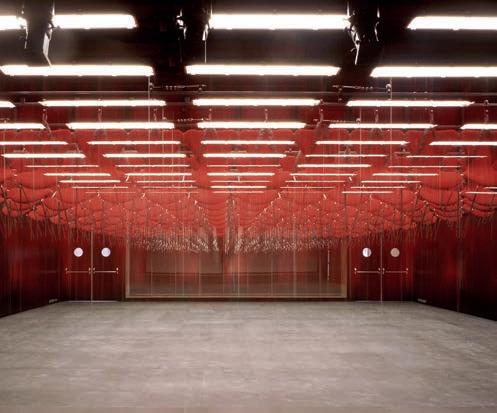

Pedro Barrié de la Maza, the first Count of Fenosa, was one of the most important people in Galicia during the first half of the 20th century. A businessman and financier, he worked in almost all sectors and promoted a number of important projects in his homeland, including the A Coruña-Alvedro Airport.
In 1966, he created a foundation to promote development and culture in Galicia. He appointed the region as the universal heir of his fortune, which was supplemented by the wealth of other family members. With its first headquarters in A Coruña, the Barrié Foundation achieved important recognition for creating one of the most prestigious scholarship programs for graduate students in Spain, focusing on the commitment to the economic development of Galicia of the beneficiaries.
Since its creation, the institution has been the backbone of a series of cultural and social projects. Headquartered in its founder’s hometown, Barrié opened a second branch in Vigo in 2005 to bring its activities closer to the south of Galicia and develop even more ac-

tivities. Located in the old Bank of Vigo, a majestic building dating from 1919, Mansilla and Tuñón were commissioned to transform these former o ces into a contemporary exhibition centre, leaving the original façade untouched. The architects have won several awards for their work.
In the latest Michelin Guide for Spanish restaurants, only 15 have the highest award: the mythical three stars. In this category, there is only one restaurant in Extremadura: Atrio, in Cáceres, which is also the only Relais & Chateaux venue in this autonomous community on the border with Portugal.
José Polo and Toño Pérez’s award-winning restaurant is a destination for gourmets from all over the world. Atrio opened in 1986, received its first star in 1994, and since then the fame of this haute cuisine corner in the centre of Cáceres has multiplied exponentially. In 2010, in order to expand the business and leverage its success with customers from all over the world, the elegant dining room was complemented by an impeccable 14-room hotel, commissioned to Mansilla y Tuñón.
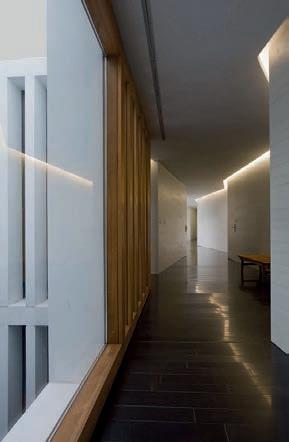
The hotel concept was so successful that it was expanded to add more rooms. Once again, Emilio Tuñón, this time alone, was in charge of restoring a historic building: a 13th-century stone house located just a few metres from the main building. He turned it into another luxury hotel with 11 rooms: Casa Paredes, in the former palace of the Paredes-Saavedra family.
ATRIO CÁCERES | SPAIN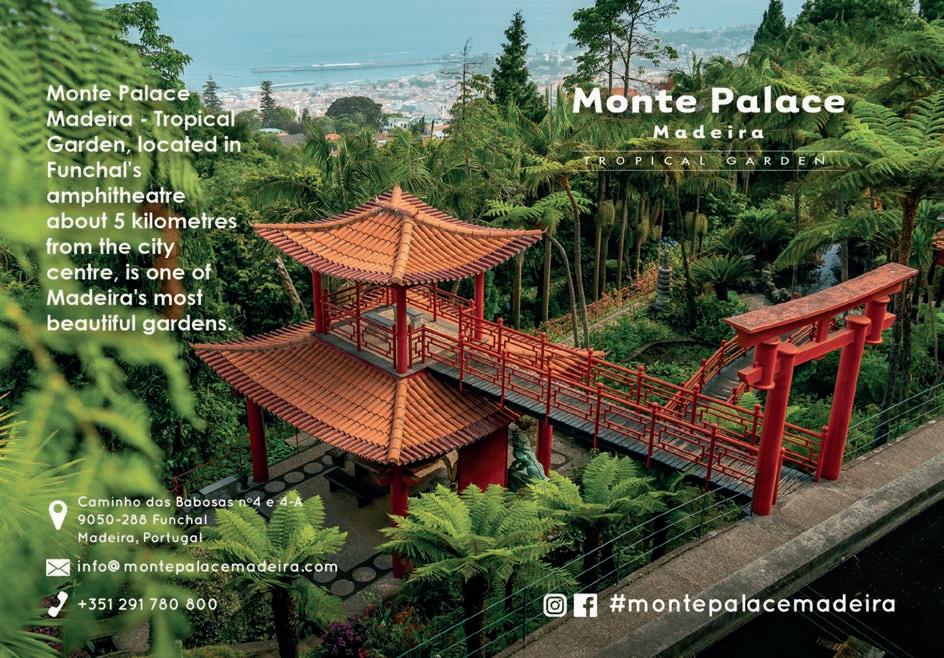


TEXTO: Javier Ortega Figueiral
La búsqueda de la autenticidad es una fijación para muchos viajeros. Vivir en primera persona la realidad de los destinos se ha convertido en una meta: mezclarse con los locales, observar, bucear en el día a día e incluso sentir los aromas característicos de cada lugar. Para lo último, pocas cosas hay más atractivas que un mercado tradicional. Eso es lo que tiene, en su puerta y directamente a la vista desde buena parte de sus habitaciones este hotel leonés de la división Collection de NH, una de las ocho marcas del grupo Minor.
Si el viajero despierta un miércoles o un sábado en este establecimiento de León, al abrir una de las ventanas de la fachada principal se encuentra inmerso en un mercado tradicional de productos del campo. Este se celebra por las mañanas dos veces a la semana en la que es la sexta plaza mayor más antigua de España: un espacio de forma trapezoidal de 4.000 metros cuadrados de superficie y cuya construcción se remonta a 1654 y concluyó al cabo de 23 años. Además del mercado tradicional con sus puestos, el huésped de este hotel en el numero 15 de la plaza tiene a la vista una serie de edificios tradicionales, cuya armonía solo la rompe la Casa del Consistorio, uno de los
edificios más bonitos de la ciudad. A pesar del nombre, la construcción también conocida por ‘El Mirador’, nunca ha sido el ayuntamiento de la ciudad, sino un lugar de privilegio desde el que ver todos los acontecimientos celebrados y vividos históricamente en León, mucho más allá de los mercados: corridas de toros, celebraciones populares, levantamientos contra fuerzas extranjeras e incluso ajusticiamientos.
El edificio que acoge el hotel fue una residencia señorial durante el siglo XVIII, tuvo algunas décadas de uso público-militar y el inevitable paso del tiempo hizo necesario decidir por donde iría su futuro a finales del siglo XX. Propiedad de un conocido constructor local, este acordó con el grupo NH devolverle vida, esplendor y dotarle de una respetuosa modernidad. Todo ello se hizo con una importante reforma de interiores y rehabilitación de exteriores para abrir en 2005 como uno de los nuevos atractivos de la plaza, 351 años después del inicio de las obras. El establecimiento tiene 51 habitaciones, un restaurante donde comer rico y un pequeño gimnasio bien equipado, aunque el mejor ejercicio para el viajero es descubrir León a pie desde el hotel.






Many travellers are obsessed with the search for authenticity. Experiencing the reality of each destination first hand is now a must: mingling with the locals, looking around, immersing oneself in daily life, even smelling the characteristic aromas of each place. For the latter experience, there are few things more alluring than a traditional market. This hotel in León, which is part of NH Collection, one of the eight brands of the Minor Hotels group, o ers exactly that on its doorstep and in full view from most of its rooms.
On Wednesdays and Saturdays, travellers waking up in this hotel in León can open one of the windows on the main facade and find themselves right in the middle of a traditional farmer’s market. It is held twice a week in the morning in the sixth oldest square in Spain: a trapezoidal area of 4,000 square metres dating back to 1654 that was completed in 23 years.
In addition to the traditional market and its stalls, guests at this hotel—located at number 15 in the square—will be able to see a series of traditional buildings interrupted only by the Casa del Consistorio, one of the most beautiful build-

ings in the city. Despite its name, this building—also known as El Mirador—has never been the city hall, but rather a privileged place from which to witness all the other events that have been celebrated and experienced in the history of León: bullfights, popular celebrations, uprisings against foreign powers, and even executions.
The building that houses the hotel was a stately residence in the eighteenth century. For a few decades, it was used by the military. The inevitable passage of time made it necessary to decide about its future at the end of the twenti-
eth century. It was owned by a well-known local builder who agreed with NH Group to bring it back to life and restore to its former splendour, with a modern touch. The building underwent a major interior renovation and exterior restoration and opened in 2005 as one of the new attractions of the square, 351 years after its first stone was set. The hotel has 51 rooms, a good restaurant, and a small well-equipped gym, although the best fitness routine for the traveller is to discover León on foot.






MÁXIMO HUERTA AND HIS LOVE FOR PARIS

SU ÚLTIMA NOVELA, PARÍS DESPERTABA TARDE, ES UNA HISTORIA LLENA DE COMPLICIDAD FEMENINA Y PASIÓN POR LA VIDA
HIS LATEST NOVEL, PARÍS DESPERTABA TARDE, IS A STORY OF FEMALE FRIENDSHIP AND A LOVE LETTER TO LIFE.
“Hay obras de arte más importantes que la felicidad. La felicidad se te olvida”
DE UN ENCUENTRO FORTUITO EN PARÍS SOLO PUEDE SALIR UN ROMANCE O UNA NOVELA. A VECES ES LO MISMO. QUE SE LO DIGAN A MÁXIMO HUERTA QUE, RECORRIENDO LA BASÍLICA DEL SACRÉ-COEUR, RECIBIÓ EL FLECHAZO QUE CONDUCIRÍA HACIA SU ÚLTIMA OBRA, PARÍS DESPERTABA TARDE. UN RELATO DE AMOR, POR SUPUESTO, AMBIENTADO EN LOS FELICES AÑOS VEINTE.
¿Qué encontró en París para hacerla el eje de esta obra?
Es una ciudad inspiradora, seas turista o escritor. Genera emociones. En cada rincón encuentras la posibilidad de una nueva historia. Durante los años veinte, La libertad y la locura llenaron las calles. Fueron años bulliciosos y brillantes.
La trama de su novela empieza con un abandono. ¿El desamor es el motor más fuerte?
Hay obras de arte más importantes que la felicidad. La felicidad se te olvida. En literatura pasa igual. Hay grandes obras nacidas del dolor y generan más emociones.
París despertaba tarde bascula entre dos caracteres, Alice Humbert y Kiki de Montparnasse, que realmente existió. La primera, una mujer valiente que desea alcanzar sus sueños, es la prudencia y la segunda, una musa real que deslumbró a los artistas de la época, encarna la joie de vivre.
Parece que la vida se empeña en hacernos elegir entre descaro y prudencia. Es irritante… Todos tenemos un poco de ambos personajes. Unas veces somos la sensatez y otras la pasión. Es lo que nos hace vivir.
Años después llegaría una resaca durísima, desoladora, a la vida de Kiki… y a la propia ciudad.
Tras esta revolución cultural, la guerra hundió el frenesí. Kiki de Montparnasse quiso experimentar la vida, consciente de lo que le rodeaba. Cuando la fiesta terminó, quedó abandonada en la madurez.
Una de las pasiones que alimentan a este autor es la devoción por los libros, que lo rodean en la Librería de Doña Leo, que regenta en Buñol, y en los libros que atesora en su casa. Es un lector impenitente que recuerda con fascinación las lecturas infantiles regaladas por su madre y su abuela.
¿Cómo está yendo su experiencia como librero?
Es algo hecho por amor a los libros, una librería pequeña que ha cambiado la vida del pueblo y la mía.
¿Y qué amores literarios habitan su biblioteca?
Mucha novela francesa, clásicos, libros de viajes, libros que conservo desde mi infancia… Y, claro, grandes autores desde Ana María Matute a Dickens, pasando por Delibes.
Huerta ha puesto en las páginas de su novela su fervor por una ciudad recorrida en esos viajes en los que, como dice, se flirtea con la vida. Un homenaje al deseo de gobernar la propia existencia, a la amistad y al amor verdadero, o su ausencia. Todo lo que vale la pena.

“There are works of art more important than happiness. We forget happiness”

A CHANCE ENCOUNTER IN PARIS CAN ONLY LEAD TO A LOVE STORY OR A NOVEL—SOMETIMES BOTH AT THE SAME TIME. THIS IS WHAT HAPPENED TO MÁXIMO HUERTA WHILE VISITING THE SACRÉ-COEUR BASILICA. HE WAS THERE WHEN INSPIRATION STRUCK AND IT RESULTED IN HIS LATEST WORK, PARÍS DESPERTABA TARDE. A LOVE STORY, OF COURSE, SET IN THE ROARING TWENTIES.
What did you find in Paris to make it the setting of this novel? It’s an inspiring city, whether you’re a tourist or a writer. It arouses emotions. You can find a new story around every corner. During the 1920s, freedom and madness filled the streets of Paris. They were bustling and brilliant years.
Your novel starts with abandonment. Is heartbreak the strongest driving force behind the plot? There are works of art more important than happiness. We for-
get about happiness. It’s the same in literature. Many great works are born out of pain, and they arouse more emotions.
París despertaba tarde swings between two characters, Alice Humbert and Kiki de Montparnasse, who existed in real life. The former, a brave woman who wants to achieve her dreams, represents prudence; the latter, a real muse who dazzled the artists of the time, embodies the joie de vivre.
It seems that life insists on making us choose between boldness and prudence. It’s irritating. We all have a bit of both characters in us. Sometimes we’re the sensible one, sometimes we’re the passionate one. It’s what makes us live.
Years later, Kiki’s life—and the city itself—would be hit by an extremely harsh and desolate hangover.
After this cultural revolution, the war brought the frenzy to a halt. Kiki de Montparnasse wanted to experience life, being aware of her surroundings. When the party was over, she was abandoned in her twilight years.
The author is devoted to one of his greatest passions: books. He runs the Bookshop of Doña Leo in Buñol, and he treasures many books at home. He is an inveterate reader who remembers with fascination the books read to him by his mother and grandmother during his childhood.
How is your experience as a bookseller going?
It is a project that I am working on for the love of books. This small bookshop has changed the life of the village and my own.
What cherished novels populate your library?
A lot of French novels, classics, travel books, and books that I have kept from my childhood, for instance. And, of course, great authors ranging from Ana María Matute to Dickens, including Delibes.
In his novel, Huerta conveys his fervour for a city he has visited during on those journeys in which, as he says, one flirts with life. It pays homage to the desire to govern one’s own existence, and to friendship and true love—or its absence. It is a tribute to everything that is worthwhile.


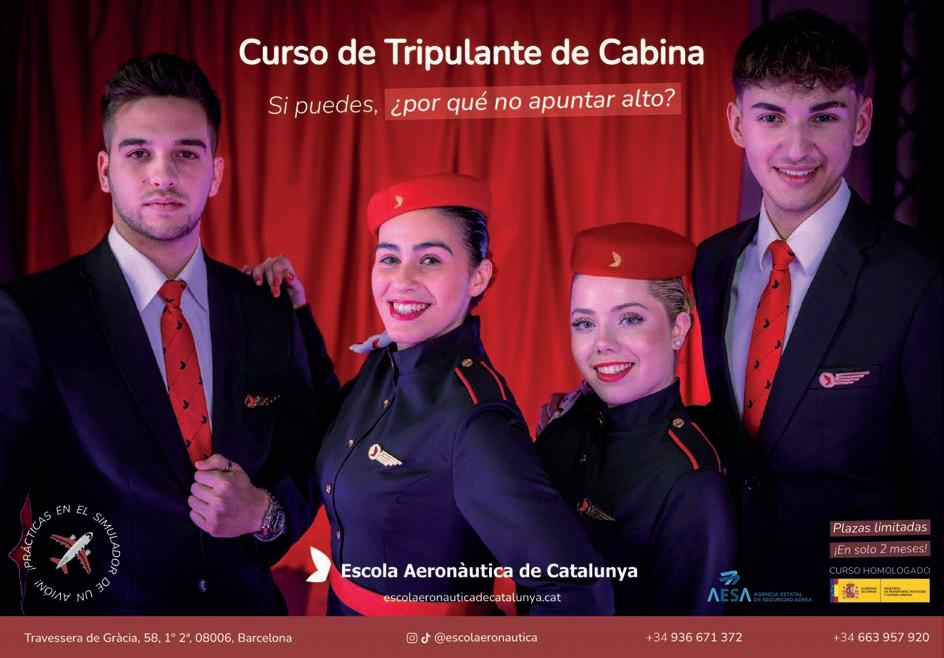

Es un hecho empíricamente comprobable cuantísimo gusta a los españoles disfrutar de los establecimientos hosteleros. Aquí somos muy de bares, casas de comidas y tabernas. Por eso, cuando en 1987 el Libro Guinness de los Records incorporó al restaurante más antiguo del planeta era previsible que el referido local se ubicara en Madrid. Pura lógica. Solo entre la glorieta de Atocha y la plaza de Antón Martín hay más bares que en toda Noruega.
El Restaurante Botín, que así se llama este santuario, abrió sus puertas en 1725 en el Madrid más castizo y aún sigue dando de comer a madrileños y turistas. Como apunta Antonio González, gerente, “es milagroso que un restaurante se haya mantenido abierto tanto tiempo sin interrupciones”. Ni los pesares de la Guerra Civil y sus estragos cerraron sus puertas. Solo la covid-19 obligó, por imperativo legal, a suspender la actividad… El coronavirus, para este propósito, fue más letal que los obuses.
Como es natural, trescientos años dan para mucho. Don Antonio, tercera generación al frente, es una enciclopedia amable que refiere toda clase de historias. Si en el XIX era un clásico madrileño frecuentado por –como diría el chotis– la crema de la intelectualidad, la segunda mitad del siglo XX llevó a sus mesas a escritores anglosajones y gentes del showbiz. A los Benito Pérez Galdós o Ramón de la Serna, les sucederían Graham Greene o Truman Capote. Y Ava Gardner, claro, coronada como reina del Madrid golfo.
El restaurante más antiguo del mundo está en Madrid
The world’s oldest restaurant is in Madrid
TEXTOS: Jerónimo López

“ Como es natural, trescientos años dan para mucho. Don Antonio, tercera generación al frente, es una enciclopedia amable que refiere toda clase de historias”
“Three hundred years really is a long time. Don Antonio, third generation at the helm, is a friendly encyclopaedia that tells all kinds of stories”


Restaurante Botín, the oldest restaurant in the world, opened its doors in 1725 in the most traditional part of Madrid and it still serves food to locals and tourists. As Antonio González, the manager, points out, “it is a miracle that a restaurant has remained open for so long without interruption”. Not even the Spanish Civil War and its devastation managed to close its doors. Only the COVID-19 pandemic forced it to close up
shop by law—the coronavirus turned out to be more lethal than the bombings.
Three hundred years really is a long time. Don Antonio, third generation at the helm, is a friendly encyclopaedia that tells all kinds of stories. In the 19th century, the restaurant was a popular haunt for the intellectual crème de la crème; the second half of the 20th century brought English-speaking writers and showbiz people to its tables.
Benito Pérez Galdós and Ramón de la Serna were followed by Graham Greene and Truman Capote—and the queen of the Madrid nights, Ava Gardner, of course.
Good old Ernest Hemingway was a di erent story. It is well known that he did not need much encouragement to go to a party, but he was such a loyal customer that he mentioned the restaurant in two of his books, The Sun Also Rises and Death in the Afternoon.
“Se dice que Goya, en su llegada a Madrid, trabajó como lavaplatos. Don Antonio, estudioso de este legado, constató que el pintor aragonés vivió en el barrio y trabajó en sus figones”
El bueno de don Ernest Hemingway era un caso aparte. Sabido es que no hacía falta tocarle mucho las palmas para animarle a un sarao, pero es que era un parroquiano tan fiel del restaurante que mencionó esta casa en dos de sus obras, Fiesta y Muerte en la tarde.
Hay un chascarrillo que de puro delicioso es inevitable relatar. Durante los años duros de la Guerra Fría, en los ochenta, en Botín coincidían militares norteamericanos de la base de Torrejón y delegados culturales soviéticos. Las francachelas entre gringos y ruskis, bien regadas por los vinos de la casa, y ambientadas por la tuna, eran épicas. Fue la aportación madrileña al desarme.
En su crónica, Botín tiene un mito, rayano en la leyenda urbana. Se dice que Goya, en su llegada a Madrid, trabajó como lavaplatos. Don Antonio, estudioso de este legado, constató que el pintor aragonés vivió en el barrio y trabajó en sus figones. Así que, se non è vero, è ben trovato…

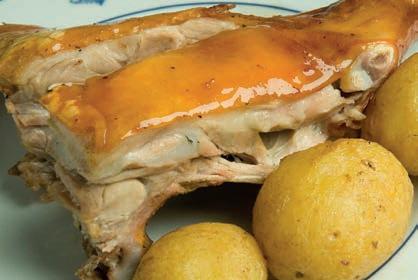
There is a deliciously funny story about this restaurant in the tough years of the Cold War. In the eighties, American soldiers from the Torrejón Air Base and Soviet cultural delegates used to meet at Botín. The parties between Americans and Russians—with house wines flowing and the tuna playing—were epic. It was Madrid’s contribution to disarmament.
Botín also boasts a myth bordering on urban legend. It is said that Goya, on his arrival in Madrid, worked here as a dishwasher. Don Antonio, a scholar on the restaurant’s legacy, confirmed that the Aragonese painter lived in the neighbourhood and worked here. So, se non è vero, è ben trovato.



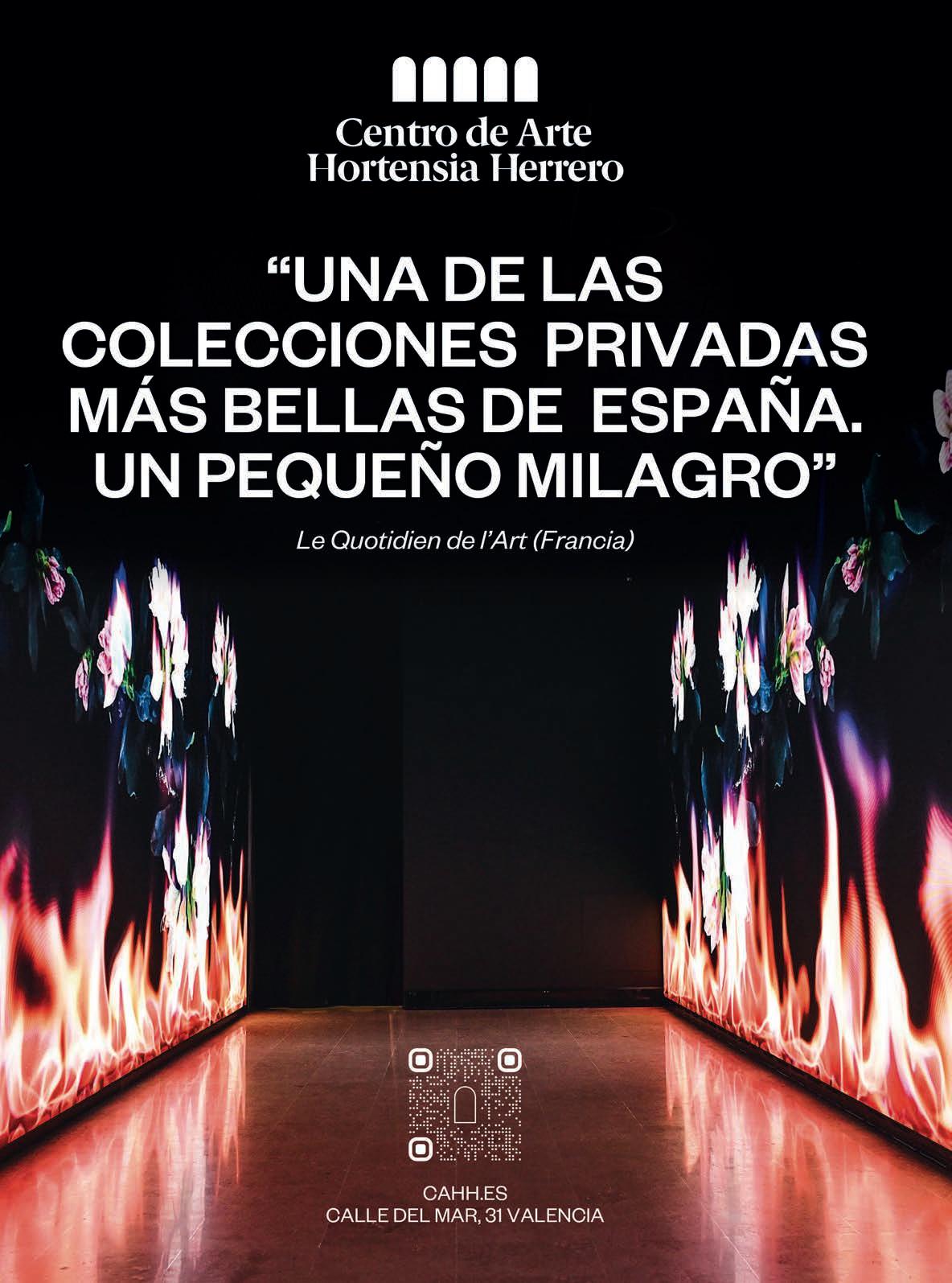
Situada en pleno corazón de las Rías Bajas, Vigo está considerada una de las ciudades con mayor calidad de vida del país. Las razones: además de su clima templado, bello paisaje y excelente gastronomía, es un destino imprescindible por la variedad de propuestas de ocio y sus afamadas playas. La oportunidad de pasear por el centro histórico, descubrir los mercados semanales o recorrer las calles comerciales con tiendas de lo más variopinto, son algunas de las muchas opciones que ofrece esta dinámica ciudad.
Located in the heart of the Rías Bajas, Vigo is considered to be one of the cities with the highest quality of life in Spain. This is not only due to its mild climate, beautiful landscapes, and excellent gastronomy, but also because of its wide range of leisure activities and its famous beaches. Going for a walk through the historic centre, discovering the weekly markets, or shopping in a great variety of shops are just some of the many things to do in this dynamic city.

Bilbao es otro ejemplo de calidad de vida. La ría es la arteria que marca el pulso de la ciudad. Siguiendo su curso se halla el Puente Bizkaia, joya de la arquitectura industrial y Patrimonio de la Humanidad. La ría conduce también hasta el casco viejo, corazón lleno de vida que invita a recorrer las bulliciosas “siete calles” para irse de pintxos o “txikitear”. El icono de la transformación de Bilbao es el Museo Guggenheim. Y también el paseo de Abandoibarra. Construido sobre los antiguos muelles de Evaristo Churruca, supuso la recuperación de un lugar esencial en la historia industrial y portuaria de la urbe. En recuerdo de la actividad industrial se creó el “Paseo de la Memoria”, una colección singular de esculturas al aire libre de artistas locales e internacionales.

Bilbao is another example of good quality of life. The estuary is the artery that sets the beat of the city. The Bizkaia Bridge crosses its mouth and is a masterpiece of industrial architecture and a World Heritage Site.
The estuary also leads to the old town, a lively hub that invites you to experience the txikiteo—bar-hopping to enjoy some pintxos and drinks—in the bustling Seven Streets. The symbol of Bilbao’s transformation is the Guggenheim Museum, and also the Abandoibarra promenade. Built on the former Evaristo Churruca docks, it represented the recovery of a key site in the industrial and port history of the city. To commemorate the city’s industrial activity, a unique collection of open-air sculptures by local and international artists was created: the
La ciudad goza de una intensa vida cultural gracias a eventos como la Seminci, la Semana Internacional de Cine y una interesante programación de ocio y cultura para todos los públicos. El paseo por la Plaza Mayor y sus alrededores o el Campo Grande, ideal para familias, así como la amplia oferta museística, son algunas de las actividades indispensables en esta ciudad histórica. No hay que olvidar su gastronomía: las tapas son manjares en miniatura y un referente de los pinchos de calidad. Además, pocas regiones pueden presumir de una variedad tan completa de vinos. Cinco denominaciones de origen configuran una carta excelente para no perderse.

The city has a vibrant cultural life with events such as the Seminci—the International Film Week—and an interesting leisure and cultural programme for everyone. A walk around the Plaza Mayor and its surroundings, the Campo Grande park—ideal for families— and the wide range of museums are some of the essential activities in this historic city. We must not forget its gastronomy. Here, the tapas are miniature delicacies and a benchmark for quality. Few regions can boast such a comprehensive variety of wines. Five designations of origin make up an excellent o ering not to be missed.


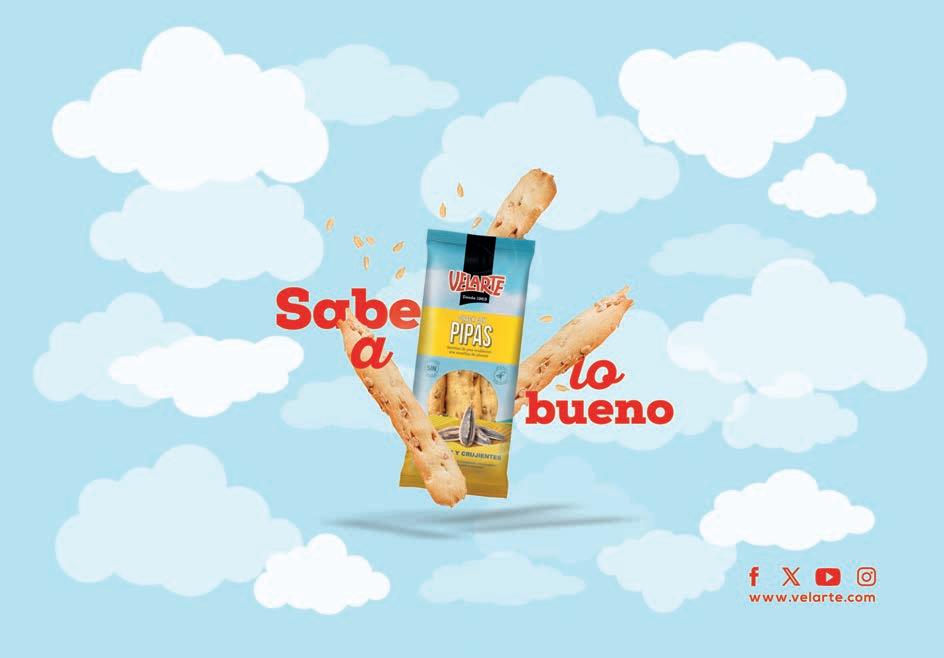

Desde tiempos ancestrales el ser humano contempla el universo. ¿Existen respuestas en esa inmensidad? Si las hay, el súperobservatorio SKAO está dispuesto a encontrarlas.
Since ancient times, man has gazed up at the universe. Are there any answers in its vastness? If there are, the SKA Observatory is ready to find them.

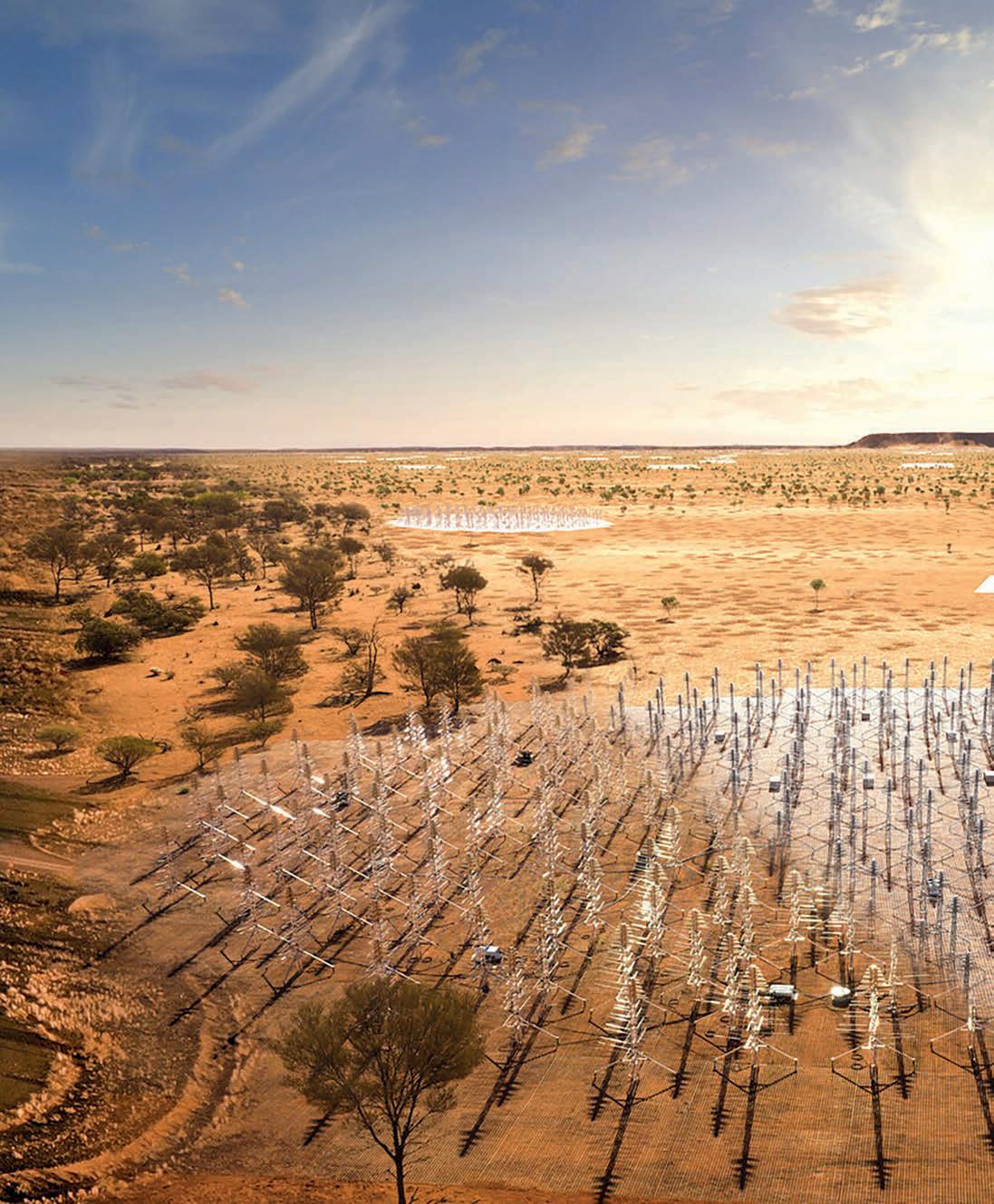
En el programa Cosmos, el divulgador científico Carl Sagan explicaba que “cuando miras las estrellas, lo importante no eres tú, son las estrellas”, un argumento que el Observatorio SKA se ha propuesto cumplir al pie de la letra. Se trata de un proyecto intergubernamental que contempla la construcción de dos radiotelescopios, los más grandes diseñados hasta ahora, previstos para 2030. Los diez miembros del SKAO –Australia, Canadá, China, Italia, India, Nueva Zelanda, Sudáfrica, Suecia, Países Bajos y Reino Unido– cuentan con la coparticipación de otros países, entre ellos, España.
El SKAO estará formado por miles de antenas parabólicas y un millón de antenas que permitirán a los astrónomos realizar observaciones con un detalle sin precedentes. Su excepcional sensibilidad superará la calidad de resolución de imagen del telescopio espacial Hubble.
Los radiotelescopios están ubicados en la región de Karoo, en Sudáfrica, y Murchison Shire, en Australia Occidental. La calidad atmosférica de estos desiertos y su baja contaminación radioelectromagnética han sido claves para convertirse en las sedes de las súperlentes.
El SKAO responderá a preguntas fundamentales sobre el espacio. Desde testar la teoría de la relatividad en situaciones límite, a descifrar cómo fue el primer segundo después del Big Bang, de qué está compuesta la misteriosa materia oscura, cómo se formaron las primeras estrellas, o las respuestas a enigmas incontestables sobre el origen de la vida.
Paul Celan escribió estos bellos versos: Una estrella / tiene luz todavía. / Nada, / nada está perdido/. Quizás este poema sea la forma más hermosa de describir la esperanza.



In the TV series Cosmos, science journalist Carl Sagan stated that “when you look at the stars, it’s not you that’s important but the stars”, a statement that the SKA Observatory wants to take literally. This intergovernmental project plans the construction of two radio telescopes—the largest ever designed—by 2030. The ten SKAO members— Australia, Canada, China, Italy, India, New Zealand, South Africa, Sweden, the Netherlands, and the United Kingdom —are joined by other countries, including Spain.
SKAO will consist of thousands of dishes and one million antennas, enabling astronomers to make observations in unprecedented detail. Its exceptional sensitivity will surpass the image resolution quality of the Hubble Space Telescope.
The radio telescopes are to be located in the Karoo region of South Africa and in Murchison Shire, in Western Australia. The atmospheric quality of these deserts and their low radio-electromagnetic pollution have been key to becoming the sites of the superlenses.
SKAO will answer fundamental questions about space: from testing the theory of relativity in extreme situations to deciphering what the first second after the Big Bang was like, what the mysterious dark matter is made of, how the first stars formed, or answering hidden mysteries about the origin of life.
Paul Celan wrote these beautiful verses: A star still has its light. Nothing, nothing is lost. Perhaps this poem is the loveliest way to describe hope.

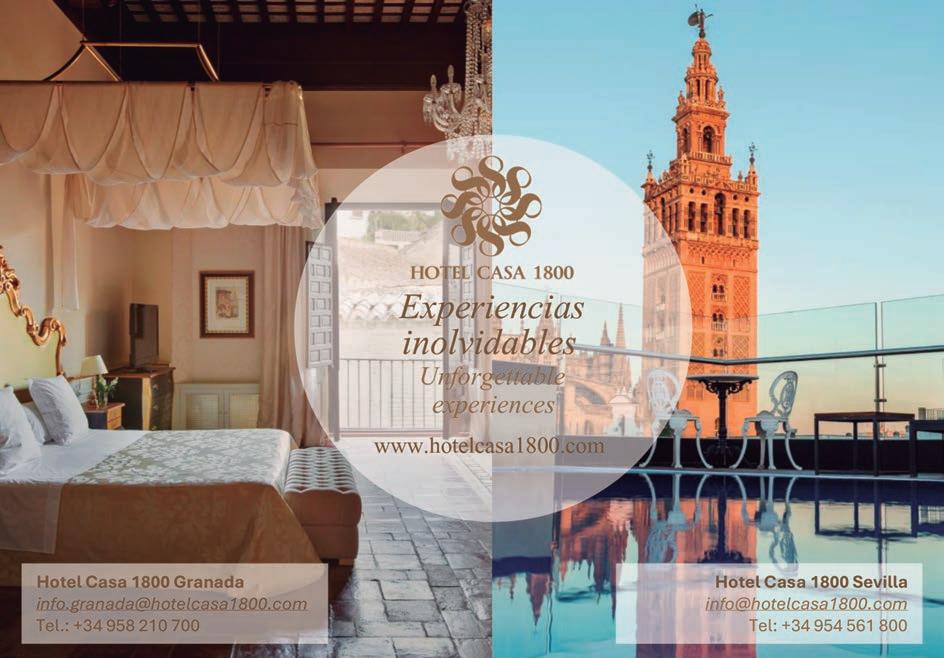


BEYOND THE “ELECTRIC”
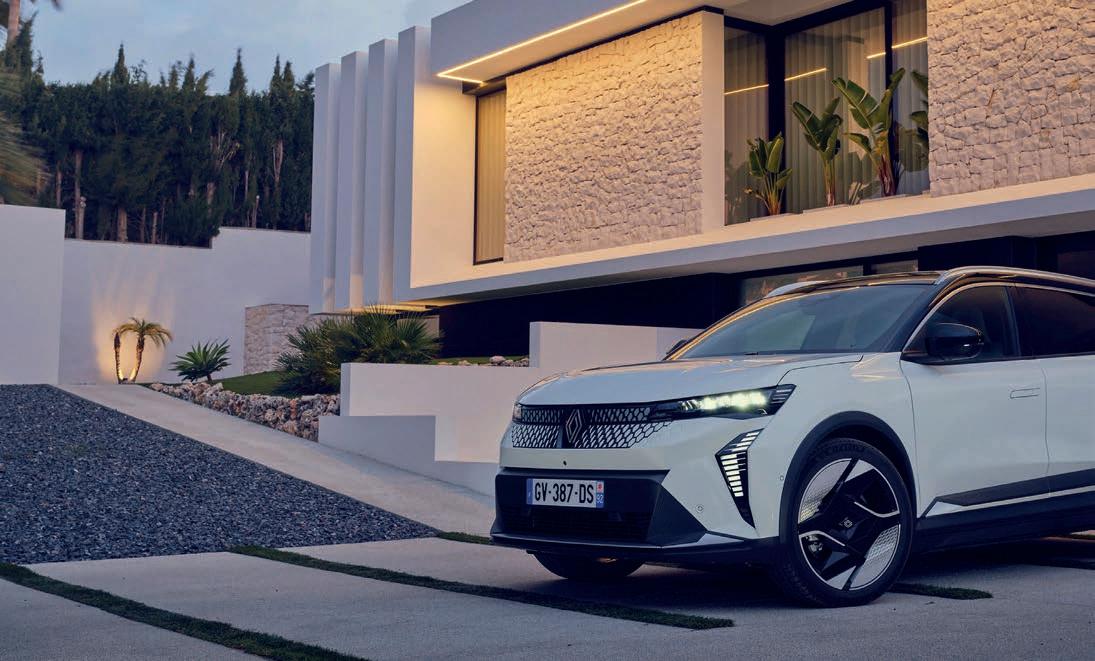
TEXTO: DIEGO ÁLVAREZ / FOTOS: RENAULT
LA MOVILIDAD DEL FUTURO | THE MOBILITY OF THE FUTURE
La movilidad del futuro es un tema apasionante y crucial para nuestras ciudades, un reto que afrontar en pleno siglo XXI. A medida que la población mundial se concentra cada vez más en entornos urbanos, es fundamental encontrar soluciones sostenibles y eficientes para el transporte. Según las tendencias y la evolución del sector, algunos expertos esbozan las siguientes claves:
Ciudades Inteligentes: la revolución digital y el uso del big-data serán vitales para crear ciudades inteligentes con sistemas de movilidad de alto rendimiento.
Electrificación: España cuenta con una oferta de coches eléctricos cada vez más amplia y una red de carga en expansión.
Enfoque en la Movilidad Personal y modelos alternativos: los expertos sugieren dar mayor protagonismo a los viandantes y fomentar el uso de bicicletas, patinetes eléctricos y transporte público.
Gestión eficiente del tráfico: es crucial para el bienestar de las ciudades. Esto implica mejorar la infraestructura vial, implementar sistemas de transporte público eficientes y promover la movilidad activa. El desarrollo de los coches conectados permite enviar y recibir información sobre el tráfico en tiempo real. Vehículos como Renault Scenic E-Tech 100% eléctrico disponen de aplicaciones integradas para
este propósito, como Google o Waze. Además, tecnologías como Safety Score analizan los datos en tiempo real para fomentar una conducción más segura.
Resiliencia y adaptabilidad: las ciudades deben ser resistentes a los cambios y capaces de adaptarse rápidamente. La movilidad del futuro debe considerar factores como el cambio climático, la seguridad vial y las necesidades cambiantes de la población.
CONFIGURANDO UN MUNDO MÁS RESPETUOSO
La movilidad del futuro se fundamenta en la integración de la tecnología, la sostenibilidad y la colaboración estrecha entre gobiernos, empresas y ciudadanos. En este contexto, los vehículos eléctricos emergen como protagonistas indiscutibles, por su capacidad de reducir significativamente la contaminación ambiental y la acústica en nuestras ciudades. Un ejemplo sobresaliente de esta tendencia es Renault E-Tech 100% eléctrico, elegido Coche del Año en Europa en 2024. Este modelo no solo representa un avance en la electrificación del transporte, sino que también destaca por su compromiso con la sostenibilidad en la elección de materiales. La eliminación del cuero animal en sus interiores, sustituido por materiales reciclados y reciclables, refleja una creciente preocupación por reducir la huella ecológica en todas las etapas de producción.


La innovación tecnológica, por su parte, es un motor clave para el desarrollo de soluciones de movilidad más eficientes y limpias. En definitiva, la movilidad del futuro se construye sobre la base de una apuesta colectiva hacia un mundo más limpio, silencioso y sostenible, donde la tecnología y la responsabilidad compartida juegan roles fundamentales.
The mobility of the future is an exciting and crucial issue for our cities, a challenge they will have to face in the 21st century. As the world’s population is more concentrated in urban environments, sustainable and e cient transport solutions are essential. Based on trends and developments in this sector, some experts outline the following key issues:
Smart Cities: The digital revolution and the use of big-data will be vital to create smart cities with high-performance mobility systems.
Electrification: Spain has a growing supply of electric cars and an expanding charging network.
Focus on Personal Mobility and alternative models: Experts suggest giving a greater role to pedestrians and encouraging the use of bicycles, electric scooters and public transport.
E cient tra c management: It is crucial for the well-being of cities. This involves improving road infrastructure, implementing efficient public transport systems and promoting active mobility. The development of connected cars makes it possible to send and receive tra c information in real time. Vehicles such as the 100% electric Renault Scenic E-Tech have integrated applications for this purpose, such as Google or Waze. In addition, technologies such as Safety Score analyse data in real time to promote a safer driving.
Resilience and adaptability: Cities not only must be resilient to change, but also able to adapt quickly. Future mobility must consider factors such as climate change, road safety and the changing needs of the population.
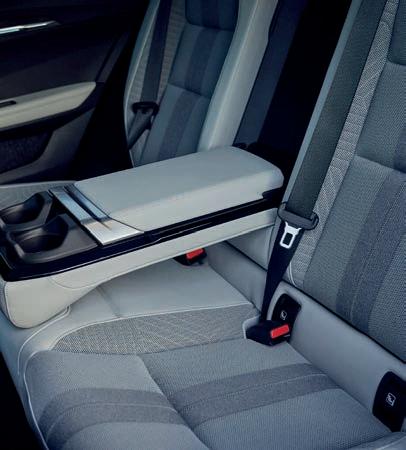
The mobility of the future is based on the integration of technology, sustainability and close collaboration between governments, companies and citizens. In this context, electric vehicles are the undisputed protagonists thanks to their ability to significantly reduce environmental and noise pollution in our cities. An outstanding example of this trend is the Renault E-Tech 100% electric car, proclaimed European Car of the Year 2024.
This model not only represents a progress in the electrification of transport, but also stands out for its commitment to sustainability in its choice of materials. The elimination of animal leather in the inside, replaced by recycled and recyclable materials, reflects a growing concern to reduce the ecological footprint at all stages of production.
Also, technological innovation is a key driver for the development of cleaner and more e cient mobility solutions. In short, the mobility of the future is built on a collective commitment to a cleaner, quieter and more sustainable world, where technology and shared responsibility play key roles.
Un buen comienzo es la educación ambiental en los más pequeños, pasando por realizar nuestras actividades de ocio sin generar ruido excesivo y optar por alternativas más sostenibles como hacer uso de la bicicleta para trayectos cortos o el coche eléctrico.
Vehículos eléctricos como Renault
Scenic E-Tech 100% permiten una movilidad más respetuosa con el medio ambiente y el entorno. Aspectos como las cero emisiones, la mayor eficiencia energética (con hasta 625 km de autonomía), el menor coste de mantenimiento frente a un vehículo térmico y una experiencia de conducción silenciosa y suave, hacen de este tipo de vehículos la mejor opción para una conducción sostenible y de bajo impacto ambiental.
Este modelo en cuestión goza además de techo panorámico con tecnología solarbay®, para disfrutar de un nivel adecuado de iluminación y temperatura a bordo, y el sistema multimedia openR link que brinda una experiencia personalizada y conectada, al día, inteligente y 100 % orientada a los usuarios.

220 CV motorización E-Tech 100% eléctrico
30 min para recuperar dos horas de conducución en carretera
774 cm2 dos pantallas openR
+30 sistemas de seguridad
HASTA
625 km de autonomía eléctrica
90 % reciclable
+50 aplicaciones sistemas openR link con Google integrado
545 L Volumen del maletero


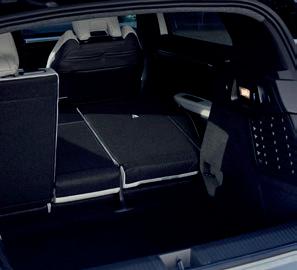

A good start is environmental education for children, including carrying out our leisure activities without generating excessive noise. We could also choose more sustainable alternatives such as using bicycles for short journeys or electric cars.
Electric vehicles such as the Renault Scenic E-Tech 100% enable a more environmentally friendly form of mobility. Aspects such as zero emissions, greater energy e ciency (with up to 625 km of range), lower maintenance costs compared to a combustion-engined vehicle, and a silent and smooth driving experience make this type of vehicle the best option for sustainable and low environmental impact driving. This model also features a panoramic roof with solarbay® technology for the right level of illumination and temperature on board, and the openR link multimedia system for a customised, connected, up-to-date, intelligent and 100% user-oriented experience.
Escanea el siguiente código QR y descubre más sobre Renault Scenic E-Tech 100% eléctrico, European Car Of The Year 2024:






AIR NOSTRUM TRABAJA EN DIFERENTES PROYECTOS TECNOLÓGICOS PARA REDUCIR LA HUELLA DE CARBONO
AIR NOSTRUM IS WORKING ON SEVERAL TECHNOLOGY PROJECTS TO REDUCE ITS CARBON FOOTPRINT

La estrategia empresarial de Air Nostrum ha estado ligada desde sus inicios a un fuerte compromiso medioambiental. En 2003 ya pusimos en marcha el “Proyecto Papel” en el que hemos seguido trabajando hasta el día de hoy y cuyo objetivo es sensibilizar a los empleados en este ámbito, así como poner la cuenta ambiental de papel de la compañía a cero mediante la reducción, el reciclaje y la reutilización del mismo así como las actividades de reforestación. En 2004 implementamos un pionero Sistema de Gestión Ambiental basado en la norma ISO 14001 convirtiéndonos entonces en la primera aerolínea española en conseguir esta exigente certificación y en 2008 colaboramos en un estudio realizado por la Agencia Espacial Europea sobre el impacto del cambio climático en algunas zonas de la provincia de Valencia.
Estos son solo algunos ejemplos de la vocación de la compañía por la sostenibilidad. En Air Nostrum sabemos bien que el principal impacto ambiental de nuestra actividad es la emisión de CO2 a la atmósfera. Por ello, nos hemos comprometido a seguir trabajando en la reducción de emisiones de gases efecto invernadero con el fin de avanzar en el camino de la descarbonización en línea con los objetivos del paquete legislativo “Fit for 55” promulgado por la Unión Europea.
Para ello hemos puesto en marcha una batería de proyectos que persiguen un crecimiento sostenible ligado a la filosofía y metas estratégicas de la compañía. Además, las particularidades de Air Nostrum, como aerolínea regional, nos pueden permitir ser pioneros en la implementación y el uso de las nuevas tecnologías de descarbonización, como los motores eléctricos y los de hidrógeno, dado que estos estarán
inicialmente disponibles únicamente para aeronaves de menor tamaño como las que utilizamos en nuestra flota.
Aparte de otras actividades medioambientales en las que nos encontramos trabajando como la electrificación de las flotas de vehículos en tierra, la reducción de plásticos a bordo o la instalación de paneles solares, en Air Nostrum actualmente estamos colaborando con Dante Aeronautical y la aerolínea Volotea en el proyecto Dovetail Electric Aviation para desarrollar un avión 100% eléctrico reconvirtiendo aeronaves comerciales de corto y medio alcance con una propulsión alimentada por un sistema híbrido de baterías y pilas de hidrógeno.
Paralelamente, Air Nostrum ha firmado un acuerdo de colaboración con Universal Hydrogen para propulsar con hidrógeno su flota de turbohélices. En caso de que el proyecto salga adelante, tenemos previsto comprar 11 kits de conversión para turbohélice de Universal Hydrogen para su uso en toda nuestra flota, tanto la actual como la futura.
El Airlander 10 se suma a la lista de proyectos en los que Air Nostrum se encuentra trabajando con el objetivo de ser partícipe de un futuro más sostenible en la aviación comercial. Tenemos un acuerdo de reserva de aeronaves como cliente lanzador de este dirigible diseñado para operar vuelos de corto radio, para cuando este se encuentre certificado.

Air Nostrum’s business strategy has been strongly committed to the environment since the very beginning. In 2003, we launched the “Paper Project” which we are continuously developing. The project is aimed at raising awareness amongst employees and bringing the company’s paper use count to zero by reducing, recycling, and reusing, as well as engaging in reforestation e orts.
In 2004, we implemented a pioneering Environmental Management System based on ISO 14001, becoming the first Spanish airline to gain this demanding certification. In 2008, we participated in a study carried out by the European Space Agency on the impact of climate change in some areas of the province of Valencia.
These are just a few examples of the company’s commitment to sustainability. At Air Nostrum, we are aware that the main environmental impact of our activity are the CO2 emissions into the atmosphere. That is why we are committed to continue working on reducing greenhouse gas emissions to drive decarbonisation in line with the goals of the “Fit for 55” legislative package adopted by the EU.
We have therefore launched a series of projects that seek sustainable growth aligned with the philosophy and strategic goals of the company. Given the specificities of Air Nostrum as a regional airline, these
initiatives will allow us to pioneer the implementation and use of new decarbonisation technologies, such as electric and hydrogen engines, which will initially be available only for smaller aircraft such as those in our fleet.
In addition to other environmental activities we are working on, such as electrifying our ground support equipment, reducing plastics on board, and installing solar panels, Air Nostrum is currently working together with Dante Aeronautical and the airline Volotea in the Dovetail Electric Aviation project to develop a fully electric aircraft by equipping short and medium range commercial aircraft with a propulsion system powered by a hybrid system of batteries and hydrogen fuel cells.
Air Nostrum has also signed a collaboration agreement with Universal Hydrogen to propel its turboprop fleet with hydrogen. Should the project go ahead, we plan to purchase 11 Universal Hydrogen turboprop conversion kits to be used across our current and future fleet.
The Airlander 10 adds to the list of projects on which Air Nostrum is working with the aim of being part of a more sustainable future in commercial aviation. We have an aircraft booking agreement as a launching client of this airship designed to operate short-haul flights, once it gets certified.
Pero mientras llega el futuro de la mano de la tecnología la mejor forma actual en la aviación de reducir la huella de carbono es utilizar combustibles sostenibles (SAF, por sus siglas en inglés). El uso de este carburante ya forma parte también de nuestra hoja de ruta. En 2021 operamos nuestro primer vuelo con una mezcla de biocombustible y el año pasado ya implementamos en muchos más vuelos el uso del SAF. También hemos firmado un acuerdo con CEPSA para avanzar en la investigación y producción de nuevos combustibles sostenibles para aviación. Nuestro compromiso para 2030, por encima de lo que exige la Unión Europea y en línea con lo establecido por el Grupo Iberia, es que el 10% del combustible que consumamos sea SAF
While we wait for the technology of the future to be developed, the best way to reduce the carbon footprint in aviation today is to use sustainable aviation fuel (SAF). Using this fuel is also one of our goals. In 2021, we operated our first flight with a biofuel mix, and last year we started using SAF on many more flights. We have also signed an agreement with CEPSA to advance research and help in the production of new sustainable aviation fuels. Our commitment for 2030 goes beyond the EU demands and is in line with the Iberia Group goals: using SAF in 10% of our total fuel consumption.
Vuelo de 2023 con SAF de Air Nostrum en Sevilla. Air Nostrum flight with SAF in 2023 in Seville.LEÓN WILL OFFER SEVEN ROUTES THIS SUMMER AND A NEW CONNECTION TO PORTO IN WINTER
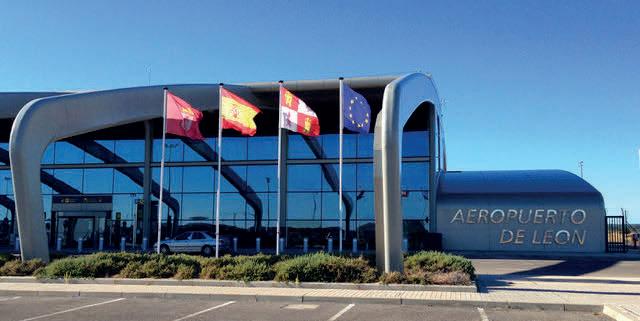
Air Nostrum conectará el aeropuerto de León esta próxima temporada de verano con siete ciudades españolas. Desde 1 de junio hasta el 26 de octubre los leoneses podrán volar a Barcelona los lunes, miércoles, jueves, viernes y domingos lo que representa cinco conexiones semanales.
También con Mallorca durante toda la temporada habrá vuelos los lunes, jueves y domingos desde el aeropuerto de la Virgen del Camino mientras que desde el 17 de junio al 1 de septiembre se programará un vuelo los jueves a Ibiza y otro los miércoles a Mahón.
Desde el 19 de julio al 1 de septiembre se añaden vuelos a Málaga los miércoles y los jueves mientras que los miércoles se volará a Tenerife. Gran Canaria en ese mismo periodo de tiempo tendrá tres vuelos semanales los jueves, viernes y sábados. La gran novedad para León llegará en la temporada de invierno con una ruta a Oporto. Serán cinco semanas de operativa entre el 6 de enero y el 9 de febrero de 2025 con vuelos los viernes y los domingos programados con un especial interés por atraer el turismo de nieve portugués a la provincia y fomentar la movilidad entre ambas capitales.
Air Nostrum will connect León airport with seven Spanish cities this summer season. From 1 June to 26 October, León residents will be able to fly to Barcelona on Mondays, Wednesdays, Thursdays, Fridays, and Sundays, which means five flights a week.
There will also be flights to Majorca from the Virgen del Camino airport on Mondays, Thursdays, and Sundays throughout the season, while from 17 June to 1 September a flight will be scheduled to Ibiza on Thursdays and another to Mahon on Wednesdays.
From 19 July to 1 September, flights to Malaga will be scheduled on Wednesdays and Thursdays, and there will be a flight to Tenerife on Wednesdays. During the same period, there will be three flights a week to Gran Canaria, on Thursdays, Fridays, and Saturdays.
But the big news for León is the new route to Porto next winter. It will operate for five weeks between 6 January and 9 February 2025 with flights on Fridays and Sundays. It aims to attract Portuguese snow tourists to the province and to promote the movement of people between the two cities.

VERANO 2024


GRAN CANARIA
19 jul al 1 de sept 24
Jueves / Thursday
Viernes / Friday
Sábado / Saturday
TENERIFE NORTE
19 jul al 1 de sept 24
Miérdoles / Wednesday
19 jul al 1 de sept 24
Miérdoles / Wednesday
Jueves / Thursday
BARCELONA
1 jun al 26 de oct 24
Lunes / Monday
Miérdoles / Wednesday
Jueves / Thursday
Viernes / Friday
Domingo / Sunday
PALMA DE MALLORCA
1 jun al 26 de oct 24
Lunes / Monday
Jueves / Thursday
Domingo / Sunday
IBIZA
17 jun al 1 de sept 24
Jueves / Thursday
MENORCA
17 jun al 1 de sept 24
Miérdoles / Wednesday






Air Nostrum opera más de 200 vuelos diarios con origen o destino a cerca de 60 aeropuertos en 9 países de Europa y el norte de África.
Air Nostrum operates more than 200 daily flights originating in or destined for nearly 60 airports in 9 countries in Europe and the north of Africa.
A CORUÑA
ASTURIAS
SANTIAGO DE COMPOSTELA
VIGO
OPORTO

FUNCHAL
LISBOA
BADAJOZ
SALAMANCA
LEÓN SANTANDER
NANTES
LA PALMA
TENERIFE
GRAN CANARIA
LANZAROTE

BILBAO
VALLADOLID LA RIOJA PAMPLONA
SEVILLA CÓRDOBA
GRANADA
JEREZ
MÁLAGA
TÁNGER
TETUÁN
VALENCIA
CASTELLÓN






rutas nacionales / national routes
rutas internacionales / international routes rutas especiales de verano / special summer routes
MELILLA ALMERÍA MADRID ALICANTE IBIZA MALLORCA MENORCA BARCELONA LLEIDA ANDORRA-LA SEU TOULOUSE REUS BURDEOSDÜSSELDORF
BRUSELAS
FRANKFURT
ESTRASBURGO






ZÚRICH LIUBLIANA




CRJ 1000
Longitud / Overall lenght: 39,1 m
Envergadura / Wingspan: 26,1 m
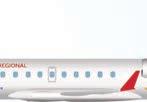

Núm. de asientos / No. of seats: 100 Alcance / Range: 2.761 km CRJ 200 Longitud / Overall lenght: 27 m

/ Wingspan: 21 m Núm. de asientos / No. of seats: 50 Alcance / Range: 3.054 km




Longitud / Overall lenght: 27 m
Envergadura / Wingspan: 27 m
Núm. de asientos / No. of seats: 72 Alcance / Range: 1.665 km

+info sobre reservas y destinos: Serviberia: 900.111.500 | www.iberia.com
MARSELLA NIZA TURÍN BOLONIA VENECIA MÚNICH GINEBRA LYON
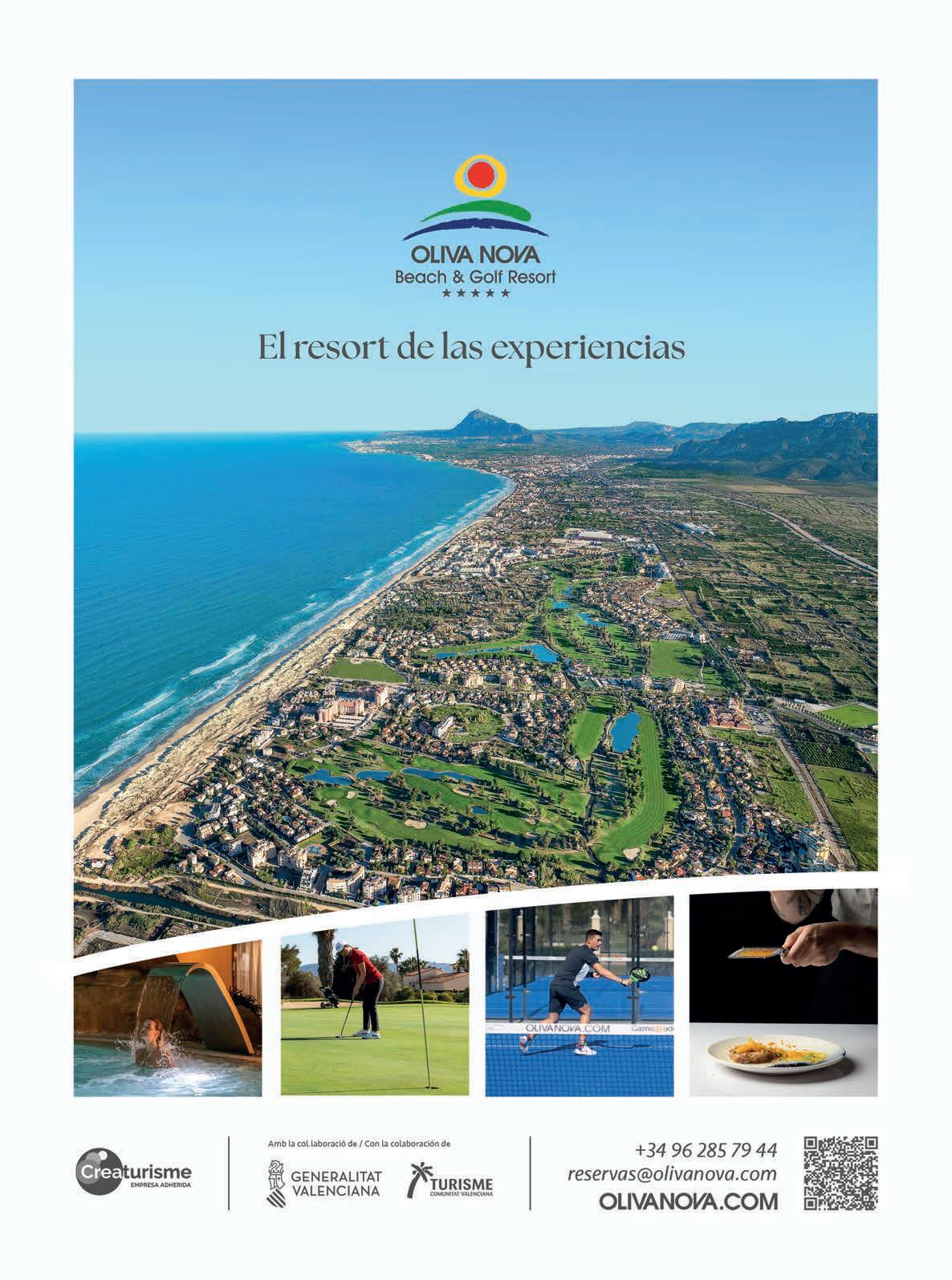



“Los sueños no se cumplen, se trabajan”
“Dreams do not come true; you have to work for them”
Es primer oficial de Air Nostrum en su flota de ATR, trabajo que compagina con el hecho de ser madre soltera de José Antonio, una promesa del fútbol español
She is a first o cer in Air Nostrum’s ATR fleet, a job she juggles with being a single mother of José Antonio, a promising young Spanish footballer.
TEXTOS: Wilfred O. / FOTOS: Dimas Luis
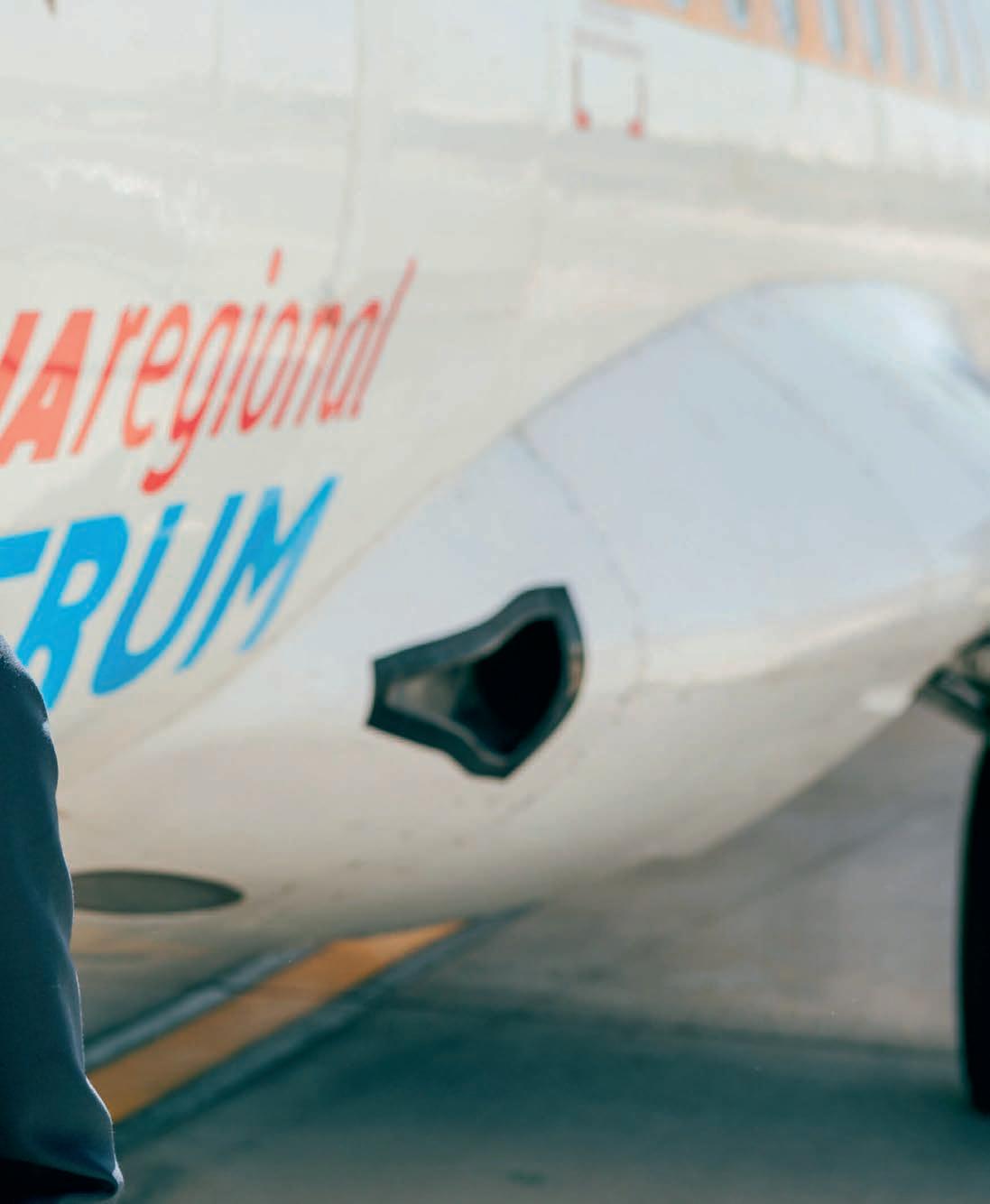
es primer oficial en la flota de ATR72 en Air Nostrum. Esta madrileña de padres gallegos lleva cinco años volando en la compañía y ha tenido que compaginar su carrera profesional con el hecho de sacar adelante una familia monoparental. Nunca lo ha tenido fácil. Su amor por la aviación le viene de su infancia cuando los aviones pasaban por encima de sus cabezas en la casa donde creció, cerca de Cuatro Vientos en Madrid. Desde entonces se planteó que su vida debía estar cerca de la nubes.
Tanto es así que ella y su hermana se dedican a la aviación. No es casualidad. Esa infancia les marcó y les determinó a ser luchadoras por un sueño de altas miras. Una infancia feliz como la que ella tuvo le ha podido dar también, con el apoyo de su familia, a su hijo que ya casi vuela solo con 16 años, siendo futbolista de la cantera del Real Madrid e internacional con España suB-17.
¿Desde cuándo quiso ser piloto de aviones?
Cuando éramos pequeños vivíamos cerca del Aeropuerto de Cuatro Vientos, supongo que el hecho de ver constantemente avionetas sobre nuestras cabezas, despertó mi vocación, además mi padre nos llevaba a ver la exhibición de la FÍO cada primer domingo de mes, un evento aéreo increíble al que animo a ir a ver a todo el mundo. Soy la mediana de tres hermanos, y cuando mi hermana tenía 22 años, empezó a trabajar como tripulante de cabina de pasajeros (TCP). Años más tarde lo hice yo siguiendo sus pasos. Ella siempre ha sido un referente para mí. Antes de llegar a ser piloto comercial, trabajé como TCP, también como supervisora de handling y para terminar de costearme los estudios, trabajé como bróker de vuelos privados en una empresa de aviación ejecutiva, trabajos que hicieron que me enamorase aún más, de todo lo que rodea esta profesión y descubrí que lo que realmente me apasionaba era volar el avión.
Te costó mucho esfuerzo conseguir llegar hasta donde has llegado? Sinceramente no ha sido un camino fácil, he tenido que pasar por muchos obstáculos, pero cuando arriesgas todo por un sueño y además tienes la gran suerte de tener una familia que te apoye en todo momento, las cosas son posibles. Mis padres me enseñaron que los sueños no se cumplen, que los sueños se trabajan, se madrugan y se luchan y lo más importante que no se abandonan nunca.
¿Volar es su sueño?
Sí lo es, me considero una persona privilegiada por poder dedicarme a lo que me apasiona y disfruto cada día como si fuera el primero. Dar siempre el 100% es complicado, pero a la vez es lo más gratificante. Me hace feliz.
¿Cómo es el día a día de una piloto de Air Nostrum?
En nuestra profesión no hay dos días iguales, cambios de tripulaciones, destinos distintos, meteorología cambiante, todo eso hace que cada jornada sea especial y única.
Por eso me encanta tanto mi trabajo, tengo la oficina con las mejores vistas del mundo.
¿Cuál es su mejor recuerdo en un avión?
Mi mejor recuerdo fue el día que mi familia me acompañó un día de trabajo, conmigo a los mandos del avión, con motivo del 70 cumpleaños de mi padre. Disfrutamos mucho de una celebración diferente. Estar

acompañado de los tuyos en un día tan especial, y tan cerquita de las nubes, para mí lo es todo. Fue unir mis dos pasiones.
¿Qué es lo más importante para un piloto profesionalmente hablando? Para mí lo más importante es tener el respeto de mis compañeros como profesional, el reconocimiento de los pasajeros cuando consigues llevarlos a su destino de forma segura y puntual y el compromiso de realizar siempre un buen trabajo en equipo. Conseguir cumplir con los objetivos de seguridad, puntualidad y eficiencia, en ese orden, es fundamental en nuestro día a día.
Es una profesión con una formación continuada, muy demandante.
Sí. Nuestro trabajo requiere de mucho entrenamiento. Tenemos tres sesiones de simulador de vuelo repartidas durante todo el año y cursos teóricos que te obligan a mantenerte al día de todos los procedimientos. Además, tenemos reconocimientos médicos que requieren de una condición física adecuada, de ahí que esta profesión sea muy vocacional.
¿Le permite conciliar la vida profesional con la personal?
La logística familiar es un reto cada día, mi trabajo implica pasar noches

That is why she and her sister work in aviation. It is no coincidence. Their childhood left a mark on them, and they resolved to fight for a far-sighted dream. With the support of her family, she has been able to give her son a happy childhood like the one she had. He is almost flying alone at the age of 16, as he is a footballer in the Real Madrid academy and plays international matches for the U-17 Spanish team.
When did you decide to become an aircraft pilot?
When we were children, we lived near the Cuatro Vientos airport. I think it was the constant coming and going of planes above our heads that ignited my vocation. Also, every first Sunday of the month my father took us to see the FIO air show, an incredible event that I recommend to everyone. I am the middle of three siblings, and when my sister was 22, she started working as a Passenger Cabin Crew (TCP). Years later I followed in her footsteps. She has always been a role model for me. Before becoming a commercial pilot, I worked as a TCP and as a handling supervisor. To finish paying for my studies, I worked as a private flight broker for an executive aviation company. These jobs made me fall even more in love with
Ana is first o cer on Air Nostrum’s ATR72 fleet. She has been flying for the company for five years and has had to balance her professional career with raising a child as a single parent. It has never been easy. Her love of aviation dates back to her childhood, when planes passed overhead in the house where she grew up, near Cuatro Vientos in Madrid. From that moment, she decided that her life had to be close to the clouds.
everything that surrounds this profession, and I discovered that what I really loved was flying the plane.
Did it take a lot of e ort to get to where you are now?
To be honest, it has not been easy. I have had to overcome many obstacles, but when you risk everything for a dream and you are lucky enough to have a family that always supports you, everything is possible. My parents taught me that dreams do not come true, you have to work for them, you have to get up early and fight for them, and most importantly, you cannot give up
Is flying your dream?
Yes, it is. I am a privileged person to be able to dedicate myself to what I am passionate about, and I enjoy every day as if it were the first one. Always giving a hundred per cent is di cult, but at the same time it is the most rewarding thing. It makes me happy.
What is the day-to-day life of an Air Nostrum pilot like?
In our profession every day is di erent: changing crews, di erent destinations, changing weather. This makes every day special and unique.
That’s why I love my job so much, I have the o ce with the best views in the world.
What is your best memory on a plane?
My best memory was the day my family joined me on a working day, at the controls of the plane, on my father’s 70th birthday. We really en-
joyed a di erent kind of celebration. Being with your loved ones on such a special day, and so close to the clouds, is everything to me. My two passions were brought together
What is the most important thing for a professional pilot?
For me, the most important thing is to be respected as a professional by my colleagues, to get the recognition of the passengers when you get them to their destination safely and on time, and to be the committed to always do a good job as a team. Achieving the objectives of safety, punctuality, and e ciency, in that order, is fundamental in our day-to-day work.
It is a profession with continuous training and very demanding. Yes, it is. Our job requires a lot of training. We have three flight simulator sessions throughout the year and theoretical courses that force you to keep up to date with all the procedures. We also have medical examinations that require you to be in good physical condition, which is why this profession is vocational.
Does it allow you to achieve a good work-life balance?
Family logistics are a challenge every day. My job involves spending nights away from home, but I try to be very present in my son’s life, both in his studies and in his sporting commitments. Giving him a good education is the most important thing for me, and that’s why I value my free time so much. It’s true that thanks to the support of my family, I can organise myself very well. Going to
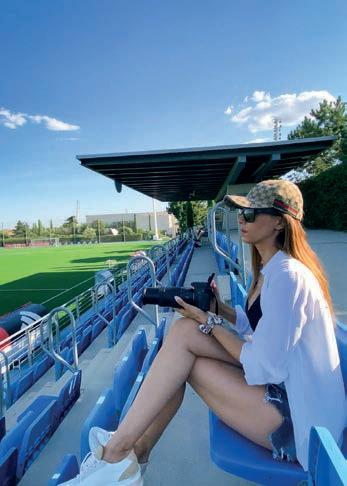
fuera de casa, pero intento estar muy presente en la vida de mi hijo, tanto en sus estudios, como en sus compromisos deportivos. Darle una buena educación es lo más importante para mí, por eso le doy tanto valor a mi tiempo libre. Es verdad que gracias al apoyo de mi familia me puedo organizar muy bien. Irme a trabajar con esa tranquilidad de saber que cuando no estoy todo está bien o incluso mejor, es fundamental en mi profesión. ¡Benditos abuelos! Además, también tengo que agradecer el apoyo de mis compañeros de trabajo que siempre están ahí cuando lo necesito.
¿Qué es lo que más le gusta hacer cuando no vuela?
En mis días libres me encanta ir a ver los entrenamientos de fútbol mi hijo, al que apoyo y admiro muchísimo por su fuerza de voluntad y su resiliencia. Es todo un orgullo acompañarle a sus partidos y siempre que puedo viajo a sus torneos de los que nos llevamos grandes experiencias. Es mi afición favorita. Me encanta hacer deporte, montar en bici, cocinar, leer y salir a comer con mis amigas. Colaborar con fundaciones o asociaciones solidarias me hace recordar lo afortunada que soy y siempre que puedo intento ayudar, además estoy muy concienciada con el cáncer ya que me ha tocado vivirlo de cerca. Creo que mi propósito en la vida, además de haber conseguido mi sueño de ser piloto, es hacer que las personas que me rodean se sientan bien cuando están conmigo. Mi prioridad es pasar tiempo en familia. ¡Son mi pilar más importante!

“En mis días libres, me encanta ir a ver los entrenamientos de fútbol de mi hijo. Es todo un orgullo acompañarle a sus partidos”
work with the peace of mind of knowing that when I’m not there, everything is fine, is vital in my profession. Thank God there are grandparents! I am also grateful for the support of my colleagues, who are always there when I need them.
“On my days o I love to go to my son’s football training. I’m proud to go to his matches with him”
What is your favourite thing to do when you’re not flying? On my days o I love to go to my son’s football training. I support and admire him a lot for his willpower and resilience. I’m proud to go to his matches with him. Whenever I can, I travel to his tournaments, from which we take away great experiences. It is my favourite hobby. I love sports, cycling, cooking, reading, and going out to eat with my friends. Collaborating with charitable foundations or associations reminds me how lucky I am. I try to help whenever I can, and I am very aware of cancer because it has a ected some people close to me. I think my purpose in life, apart from having achieved my dream of becoming a pilot, is to make the people around me feel good when they are with me. My priority is to spend time with my family. They are my main support!

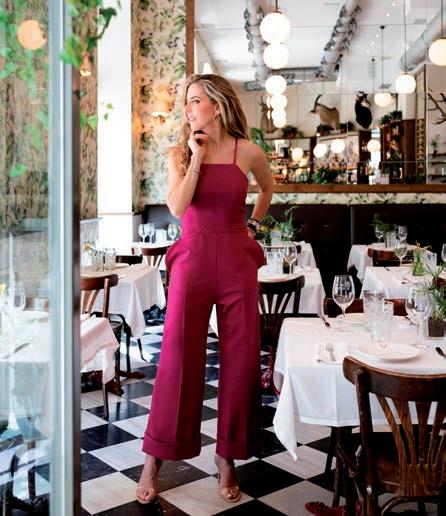

En la mítica calle Velázquez, en pleno barrio de Salamanca está el restaurante El Velázquez 17, que con el parque del Retiro cerca, es un must para cualquiera que pasa por Madrid. Nos cuenta Johanna Müller-Klingspor, su propietaria, que lo concibe como una “Sinfonía Gastronómica” uniendo lo mejor del producto local y cocina de mercado, con guiños a Iberoamérica.
“Madrid me cautivó desde que llegué y ahora vive su mejor momento. Hay una mezcla de culturas que enriquece la creatividad y la energía. Intento plasmar todo eso en el restaurante, tanto en la cocina, como la coctelería y el equipo”. El Velázquez 17 siempre continúa, con una cocina abierta todo el día… aquí pasan cosas. Se ha vuelto lo que muchos llaman, su segundo hogar y es un punto de encuentro referente. Los más asiduos podrán disfrutar de un exquisita cocina honesta, probar unos buenos benedictinos en el brunch, la parrilla de solomillo y bernesa, sus míticas berenjenas crujientes con humus y miel, o rematar el día con el mejor Gin&Tonic del barrio Salamanca, al compás de unos tequeños. Mención especial a los cócteles que se pueden tomar en su Speakeasy o en la terraza. Larga vida a este clásico madrileño que ya cumple 10 años! C/ de Velázquez, 17


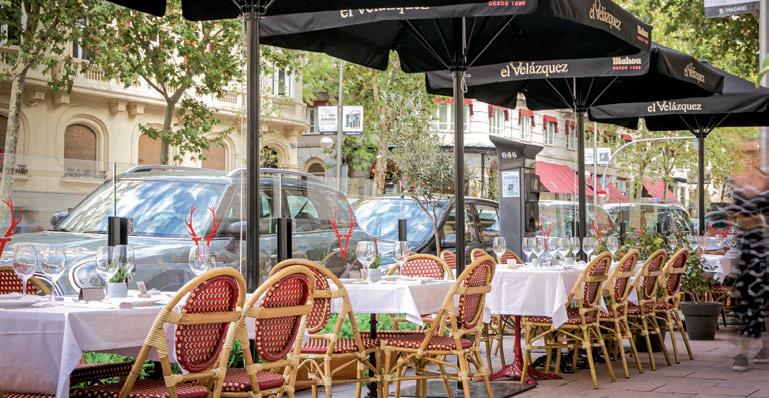


 NAlbert Orfila Director del diario Última Hora Editor of the Última Hora newspaper
NAlbert Orfila Director del diario Última Hora Editor of the Última Hora newspaper
ormalmente se asocia habitar en una isla al mar. Es lógico. De hecho, esa infinita masa líquida define y moldea a los isleños. Así ha sido a lo largo del tiempo y es probable que así siga siendo. Todo eso que nos rodea acaba impregnando nuestro carácter y también nuestra propia esencia. El mar nos envuelve, fija fronteras e incluso dibuja el propio horizonte. No hace tanto tiempo, unos pocos sabían lo que se ocultaba lejos de la porción de tierra sobre la que había nacido y eso siempre despertó tanto temor como curiosidad. Muchos de nuestros abuelos aprendieron como era el mundo, incluso su propio país, en viejos libros con fotografías en blanco y negro. Viajar era para aventureros, para tipos rebeldes y curiosos a los que casi nadie llegaba a entender. ¿Dónde se podía estar mejor que en Menorca, Mallorca o Eivissa?
El transporte marítimo tendió puentes, pero fue la aviación la que lo iba a cambiar todo para siempre. Nos dio alas. Nos dio libertad para ir y volver. Una oportunidad para decidir y conocer. Cualquier isleño recuerda su primer viaje en avión. Despegar y poco después sobrevolar el mar con una mezcla de fascinación y nerviosismo. Era casi mágico. ¿Cómo era posible? No se olvida.
Tampoco el destino y el motivo: a Barcelona para disputar un torneo de baloncesto. Fue el primer beso para muchos. Es probable que para casi todos los de aquel equipo de categoría infantil que marchaba a la Ciudad Condal en un vuelo de Aviaco. Sin móviles, a lo sumo algún walkman, nadie perdía de vista su tarjeta de embarque, la llave que te abría definitivamente las puertas del cielo. Viajar en equipo con apenas 12 años era excitante; una experiencia que me impidió dormir la noche anterior. Esos nervios se transformaron en euforia cuando la tripulación de cabina anunció que había que abrocharse el cinturón. Puede resultar ridículo, pero jamás olvidaré que nos sirvieron Coca-Cola. Las sonrisas de los compañeros, despegar... Dejar atrás el mar, ver Barcelona desde el aire...
Sin poder predecirlo en aquel momento, el avión acabaría marcando mi vida, igual que el mar había definido mi naturaleza. Viajar semanalmente durante casi una década a cualquier punto de España o de Europa te abre la mente. Aprendes muchas cosas y también a valorar muchas otras. Resulta excitante salir de la isla, sobrevolar el mar y descubrir que se oculta tras el horizonte, pero también reconforta volver a casa, a ese trozo de tierra siempre salpicada por el azul.
People usually associate living on an island with the sea. This makes sense. Indeed, that endless liquid mass defines and shapes the islanders. This is how it has been throughout time and how it will probably continue to be. All that surrounds us ends up influencing our personalities and our very essence. The sea surrounds us, sets boundaries, and even draws the horizon. Not so long ago, only a few knew what was hidden far from the piece of land on which they were born, and this always aroused both fear and curiosity. Many of our grandparents learnt what the world—or even their own country—was like from old books with black and white photographs. Travelling was for adventurers, for rebellious and curious guys whom hardly anyone could understand. What could be better than Minorca, Majorca, or Ibiza?
Maritime transport built bridges, but it was aviation that would change everything forever. It gave us wings. It gave us the freedom to go and come back. An opportunity to decide and to get to know places. Every islander remembers their first plane trip. Taking o and soon after flying over the sea felt like a mixture of fascination and nervousness. It was almost magical. How was it possible? It is unforgettable.
We always remember the destination or the reason: going to Barcelona for a basketball tournament. It was like the first kiss for many of us. It probably felt like that to almost all the members of that children’s team that went to Barcelona on an Aviaco flight. With no mobile phones, at most with a Walkman, no one lost sight of their boarding pass, the key that opened the gates of heaven. Travelling as a team at the age of 12 was exciting; an experience that prevented me from sleeping the night before. The initial nerves turned to euphoria when the cabin crew announced that we had to fasten our seatbelt. It may sound ridiculous, but I will never forget that they served us Coca-Cola, the smiles of our fellow passengers, taking o , leaving the sea behind, or seeing Barcelona from the air.
Without being able to predict it at the time, the plane would end up shaping my life, just as the sea had defined my nature. Travelling weekly for almost a decade to any part of Spain or Europe opens your mind. You learn a lot of things and you also learn to appreciate many others. It is exciting to leave the island, to fly over the sea and discover what is hidden behind the horizon, but it is also comforting to return home, that piece of land always splashed with blue.

